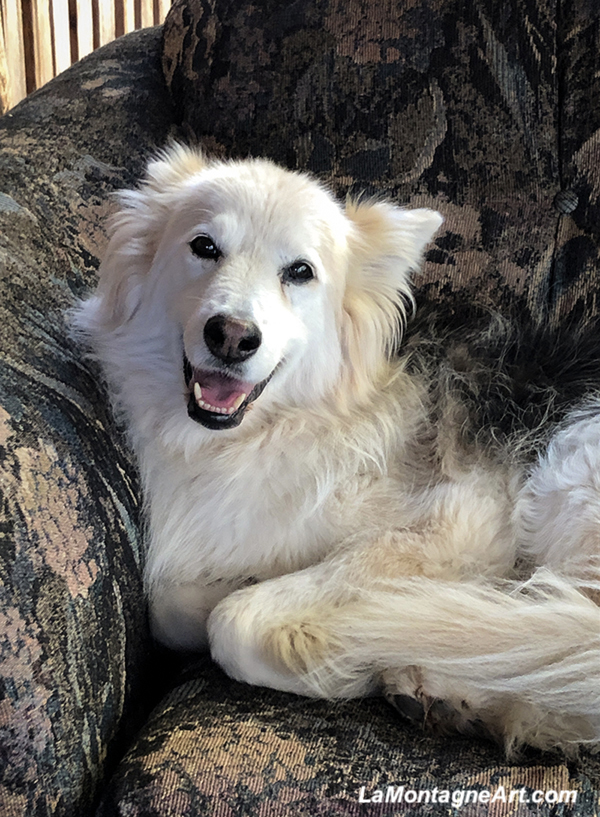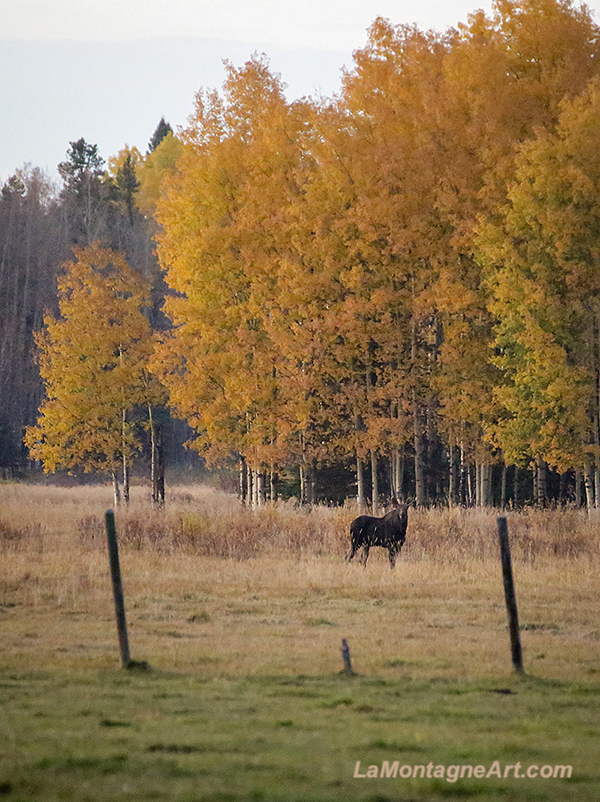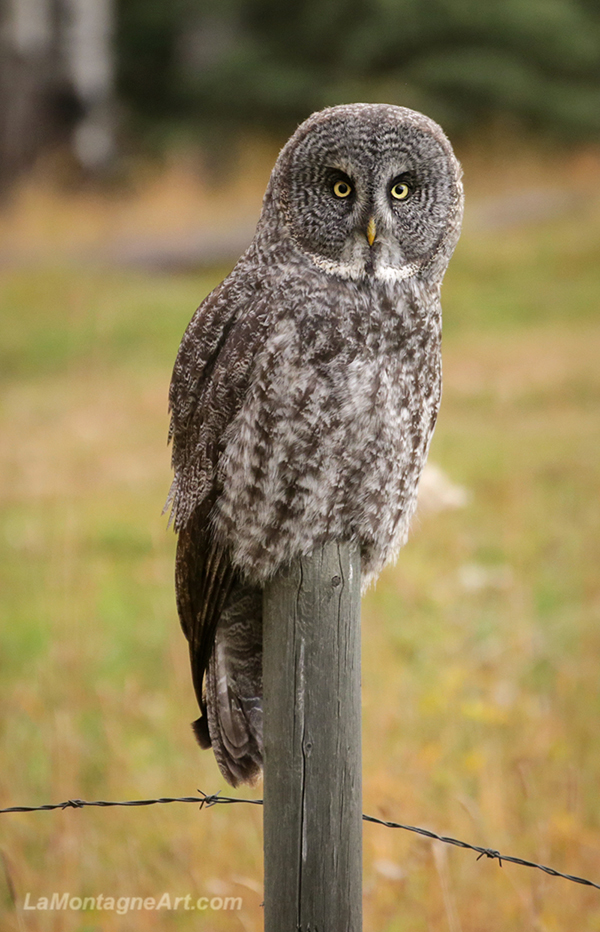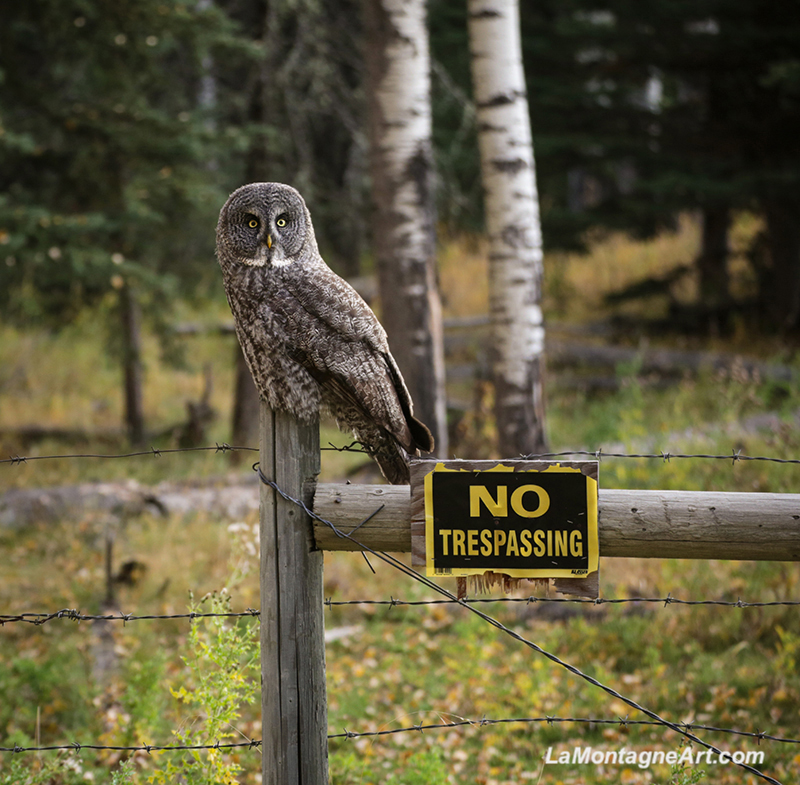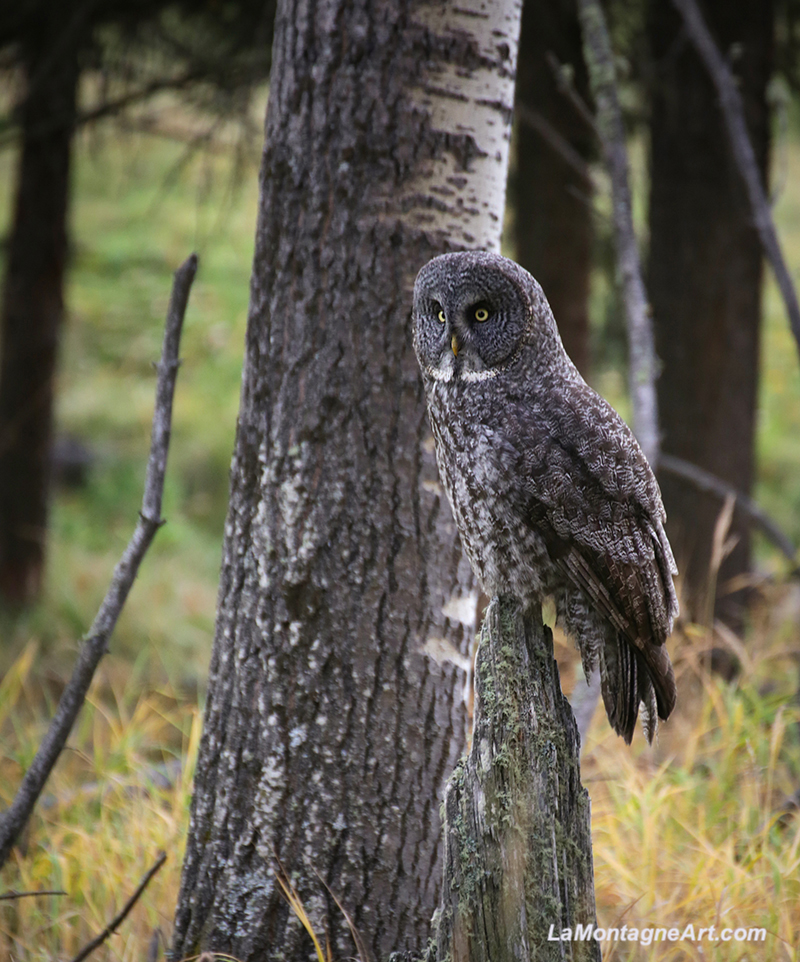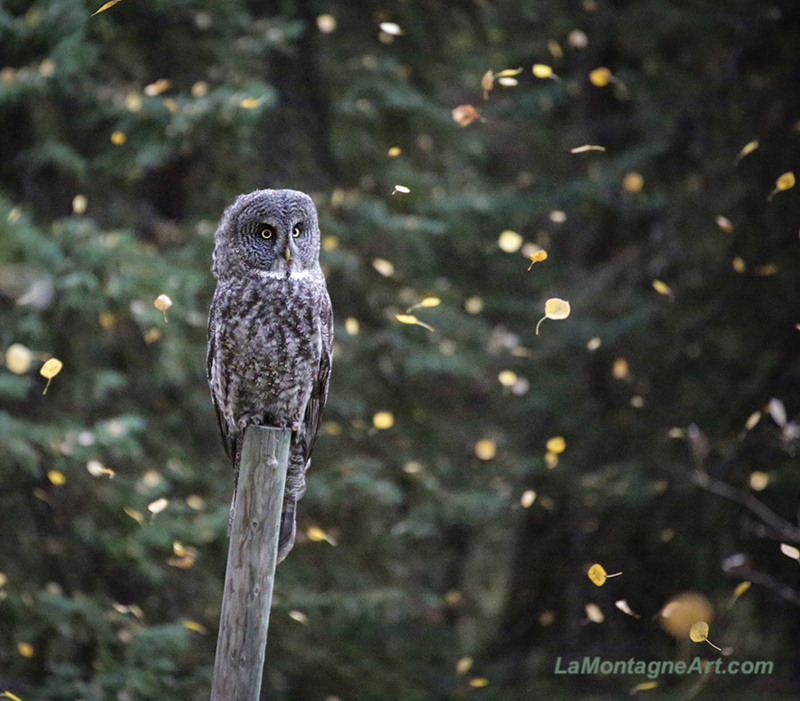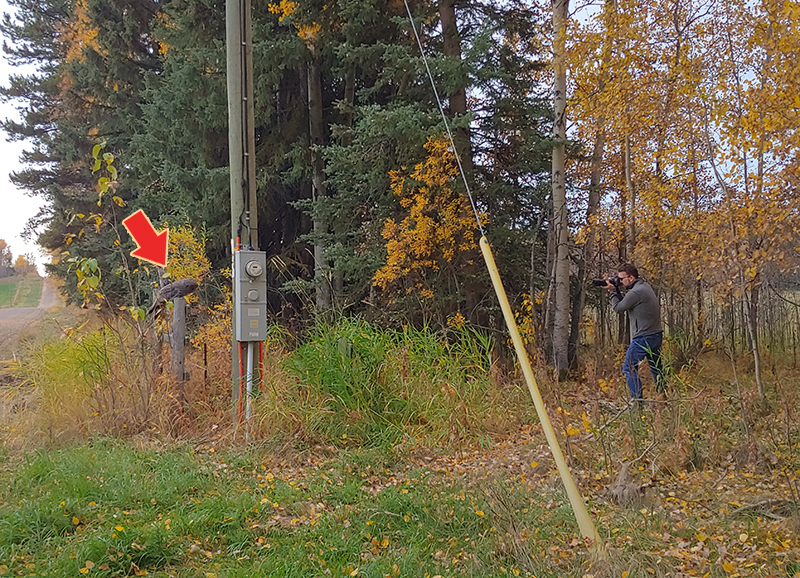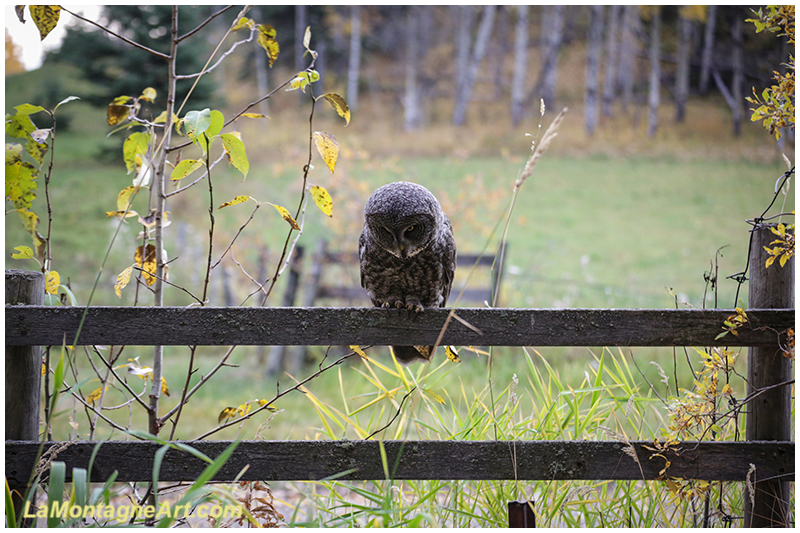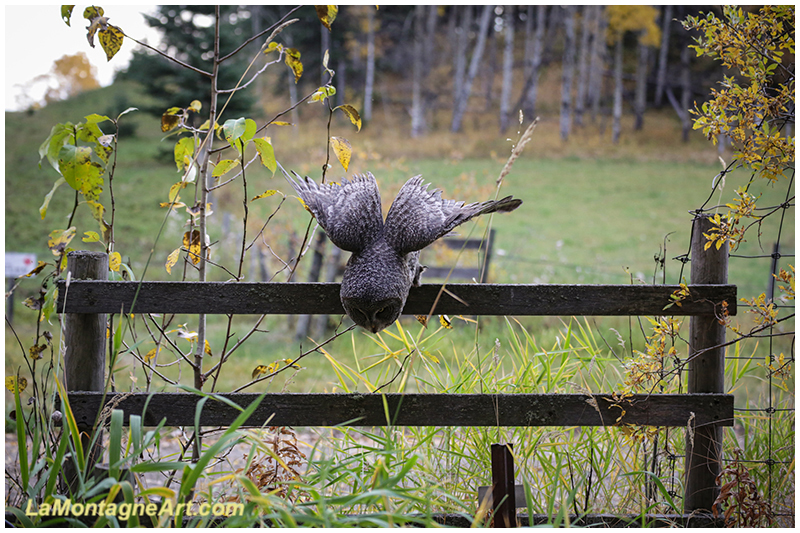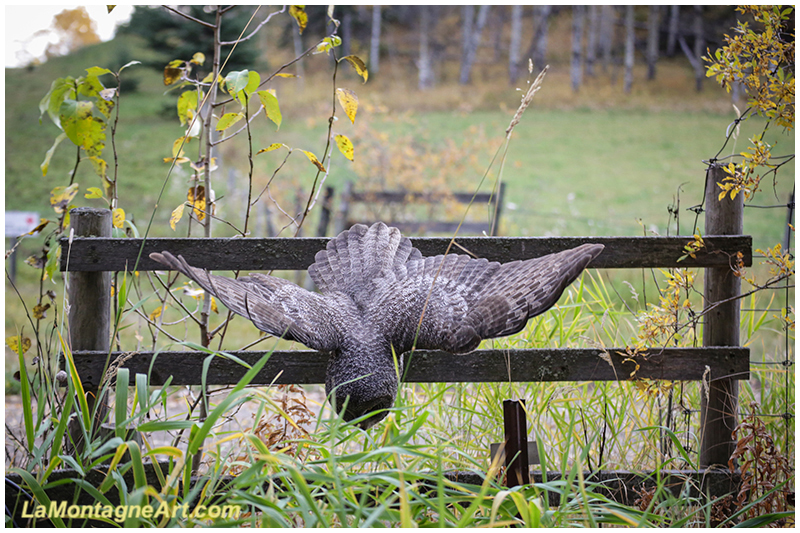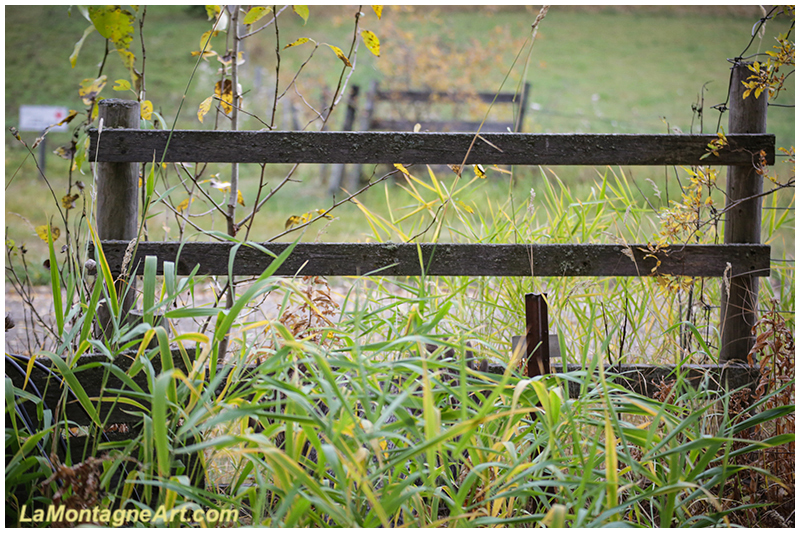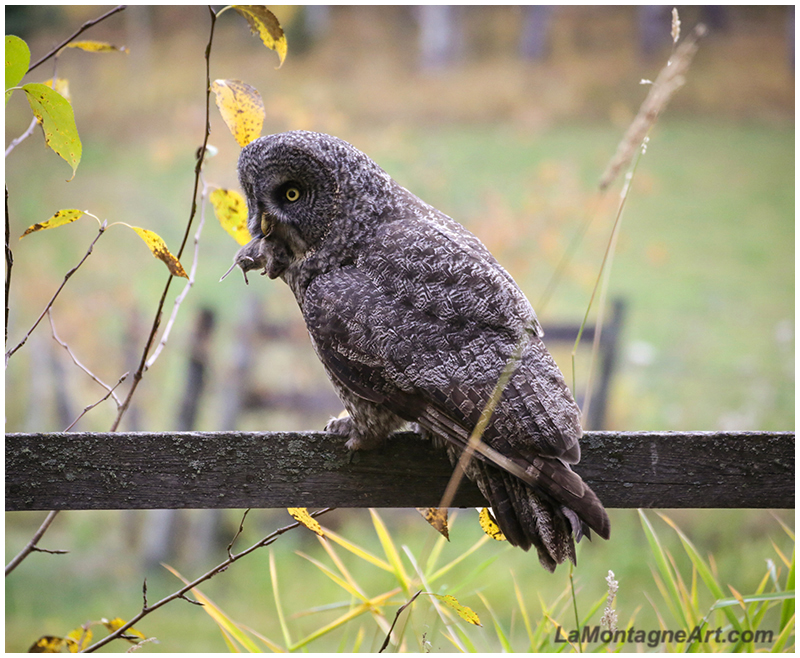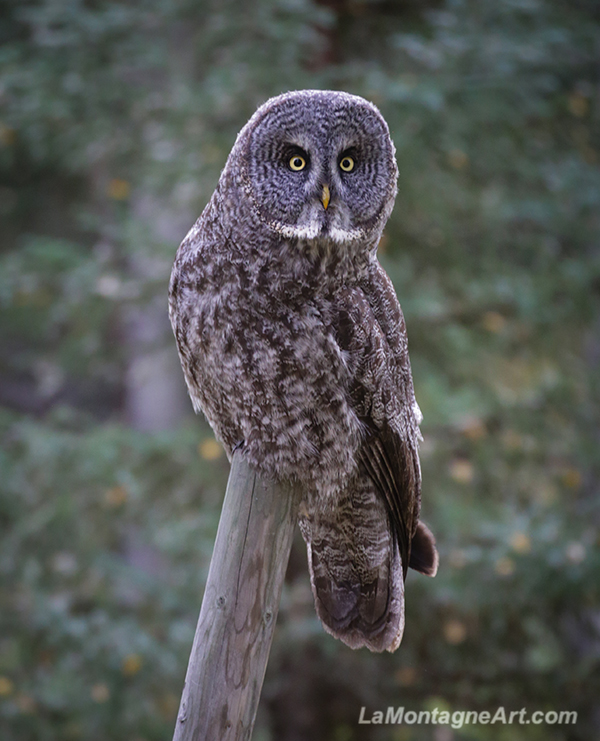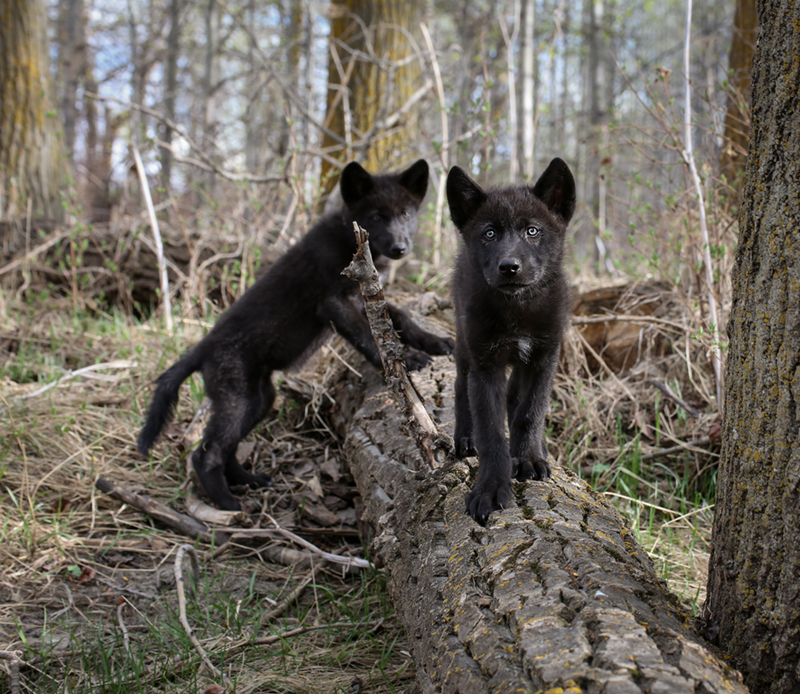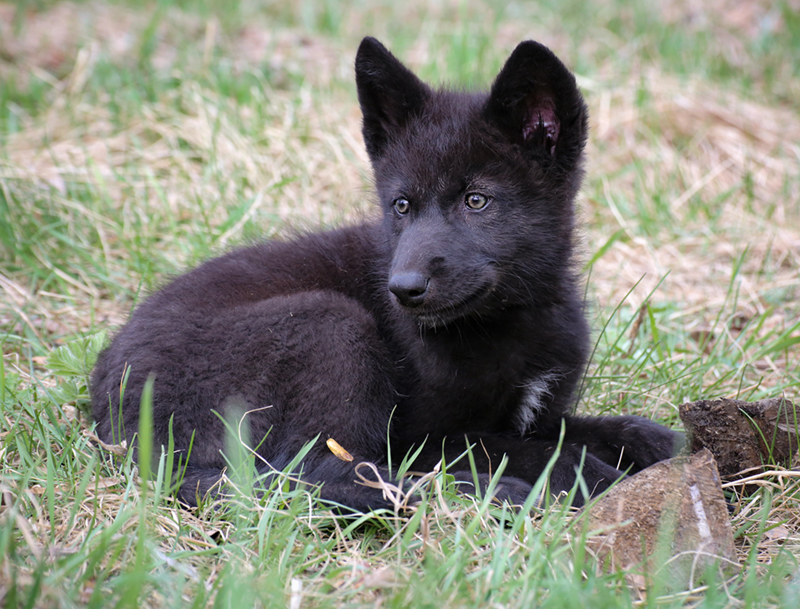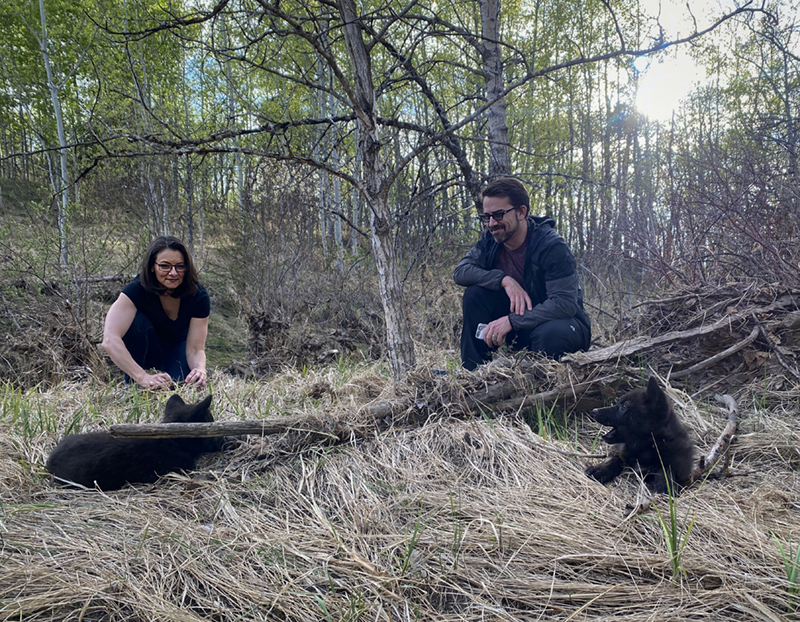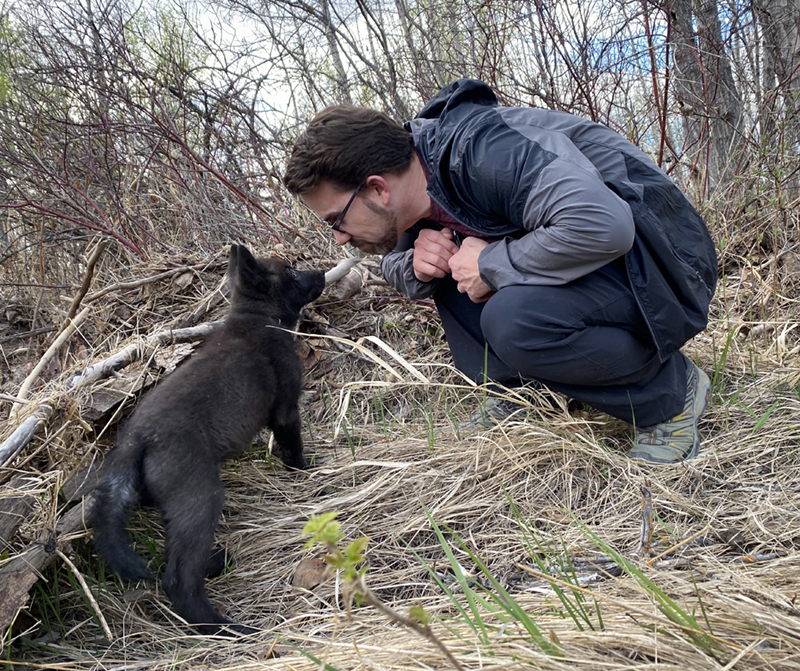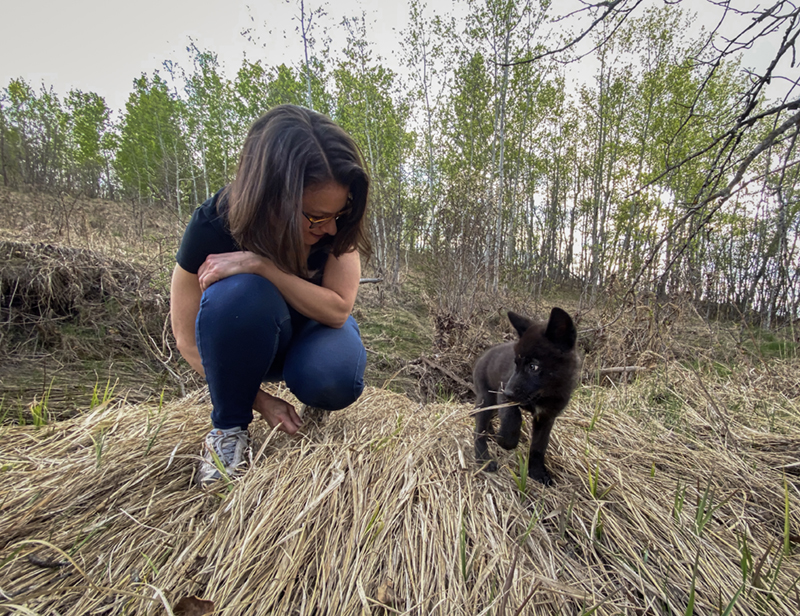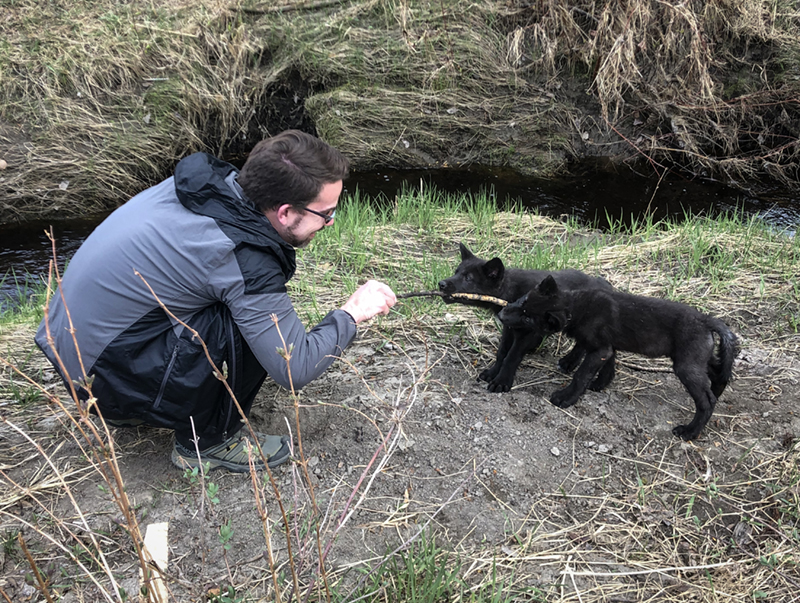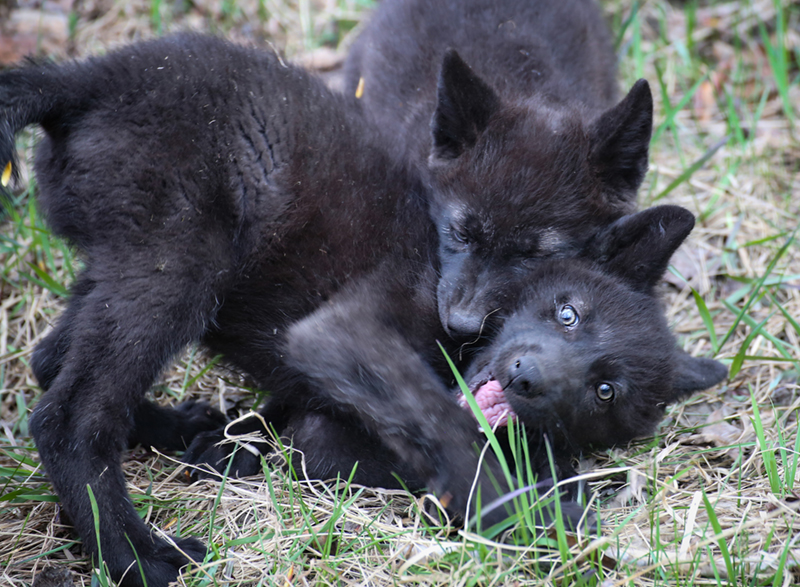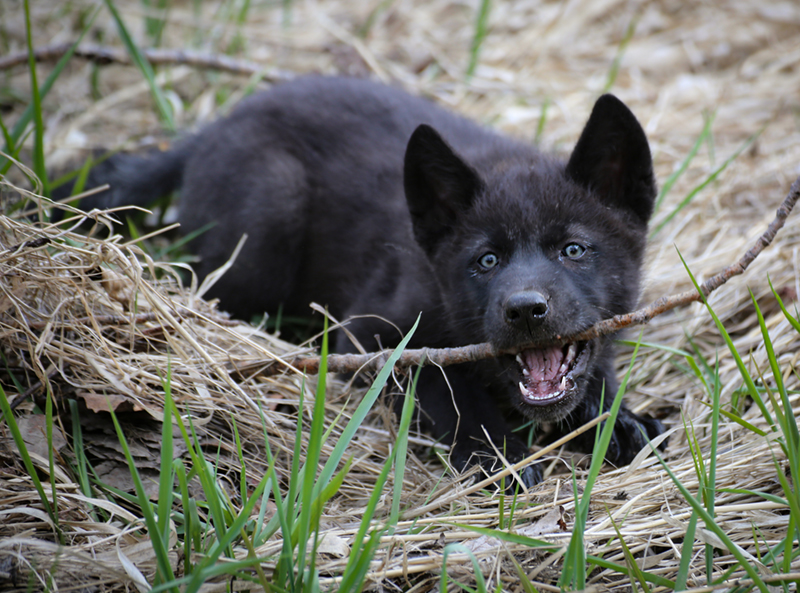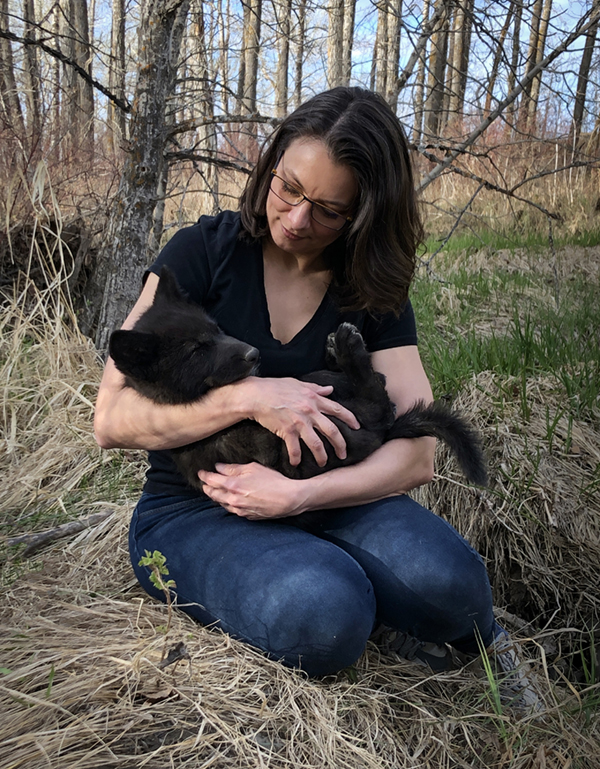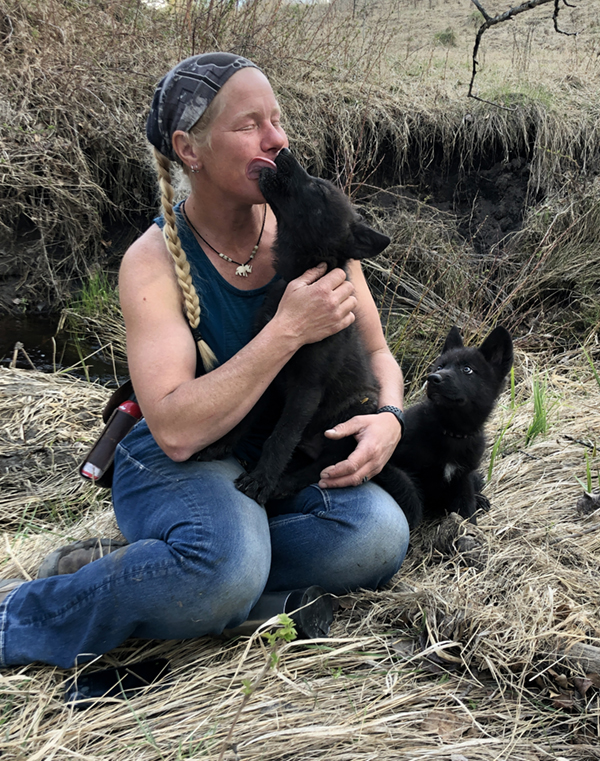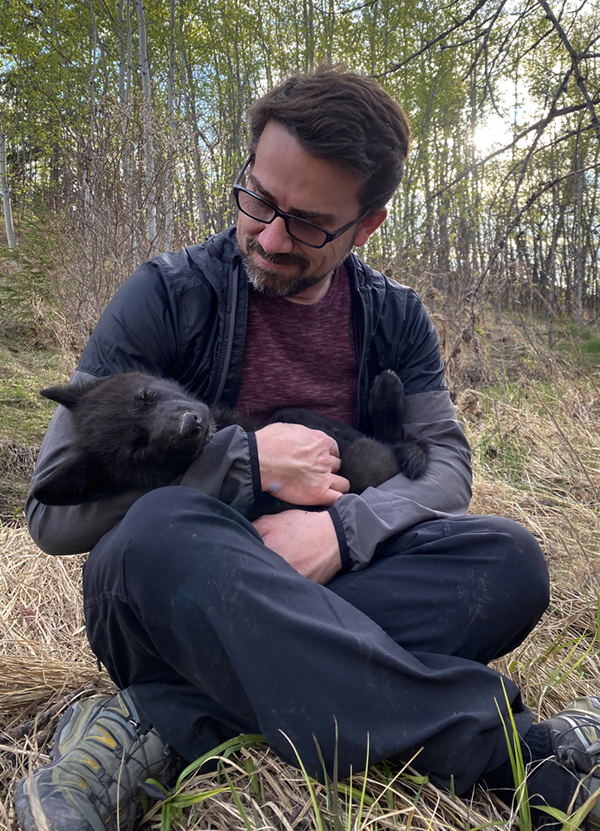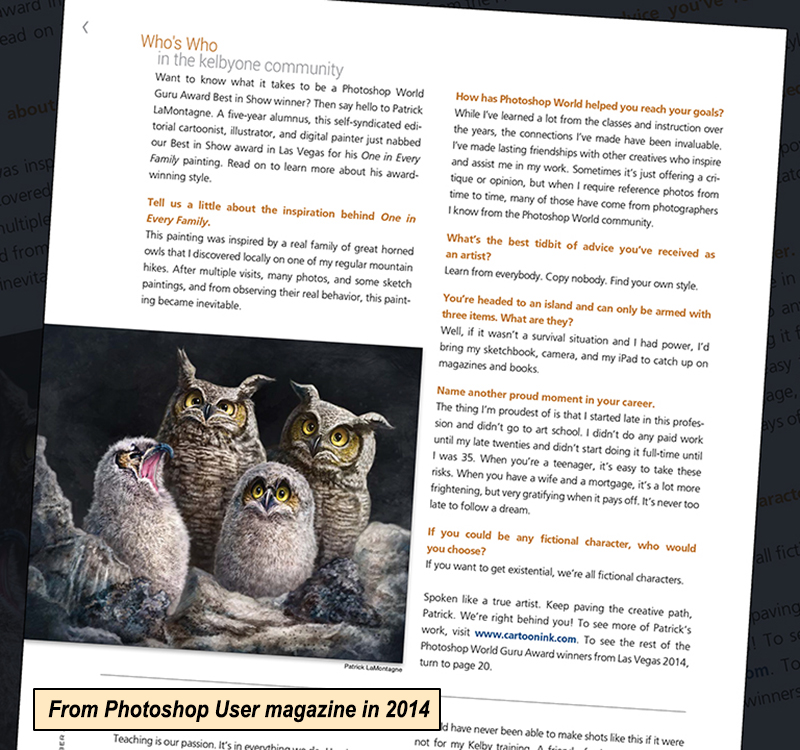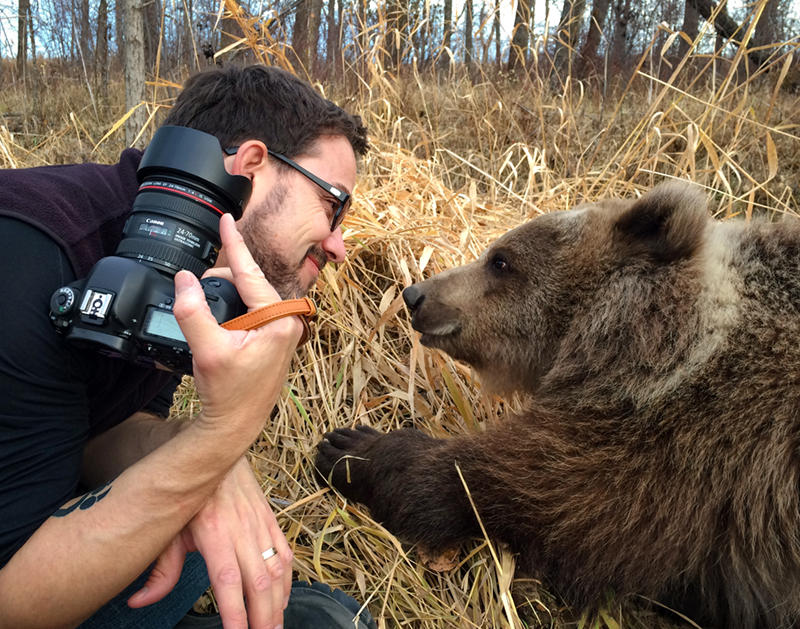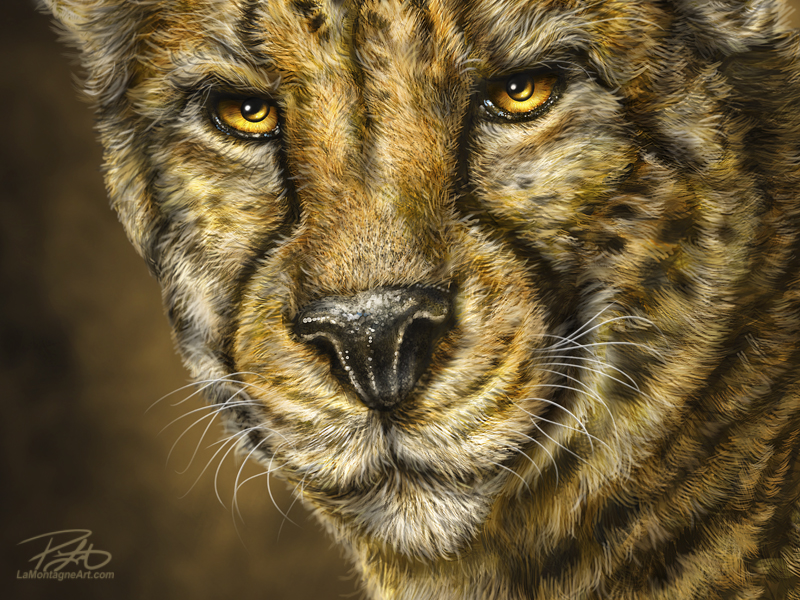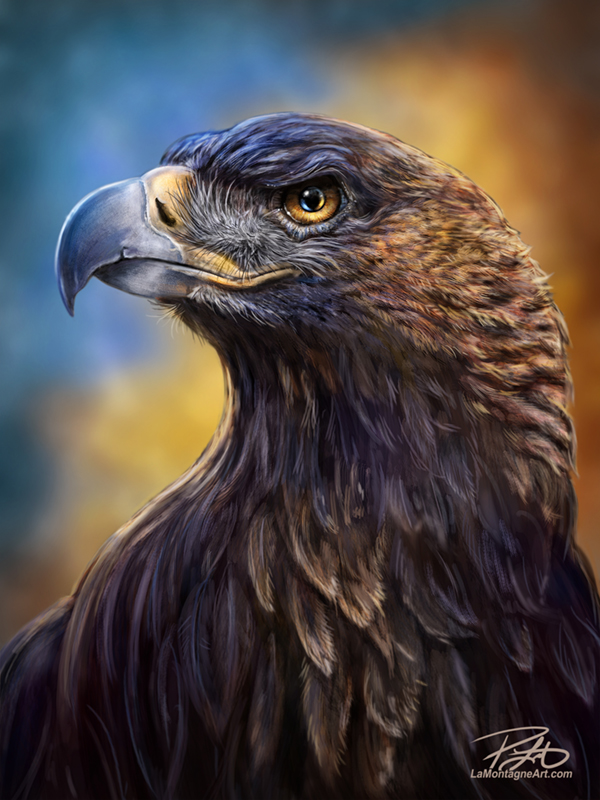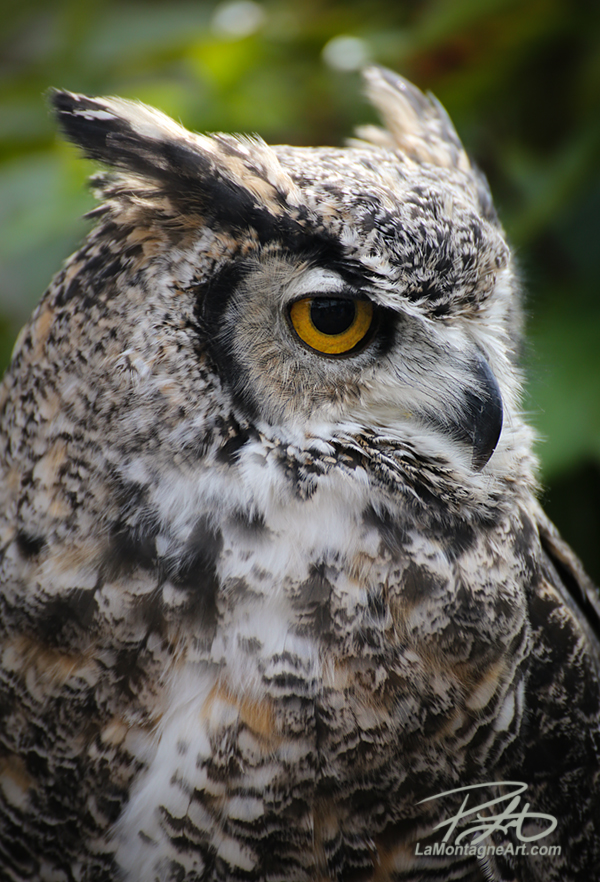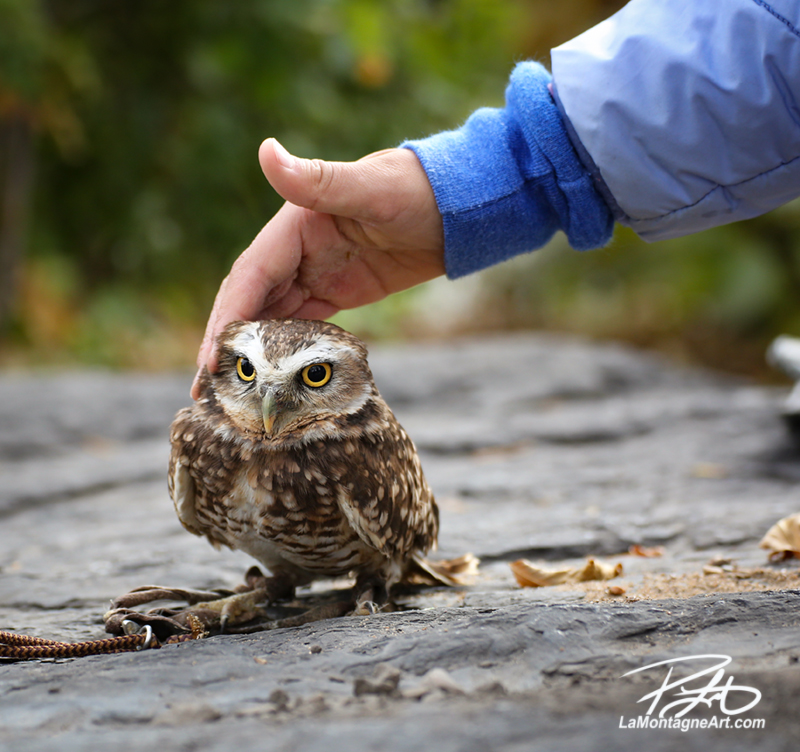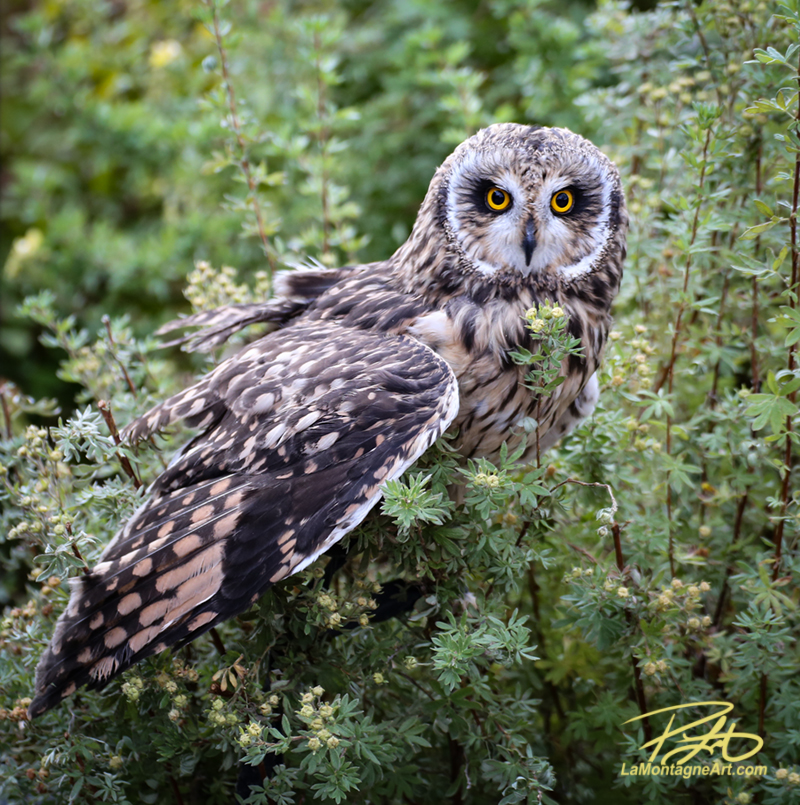
As the colder weather approaches, animal photo opportunities become less plentiful, and that scarcity, real or imagined, makes me want to take more pictures.
Considering I have thousands of neatly organized reference photos I have never used, for well over a hundred animals, running out has never been a problem. But it’s hard to ignore the impulse to stock up, just in case.
Hey, squirrels store way more than they need for the winter, too.
Time ticking was the prime motivation for my trip to the Alberta Birds of Prey Sanctuary in Coaldale last month. Releasing two hawks into the wild was worth the trip alone, but after editing and sorting my pictures, I’ve also got dozens of new photos I can paint from.
Still open until September 30th, Discovery Wildlife Park usually closes from October to the end of April. But during the pandemic, they created a holiday lights drive-through feature. With the worst of the health crisis thankfully over, their impressive Light The Night experience has continued to grow, open this year from November 15th to January 5th.
With winter gift shop stock in mind, they placed a surprising end-of-season order for prints and stickers. I always like to deliver those in person so I have an excuse to take photos.
I had driven to Coaldale in a torrential rainstorm, but that meant great light for pictures when I arrived. In an unwelcome repeat, but with the same result, I drove to Innisfail last week in another storm. When I got there, the weather was so foul I was the only person in the park.
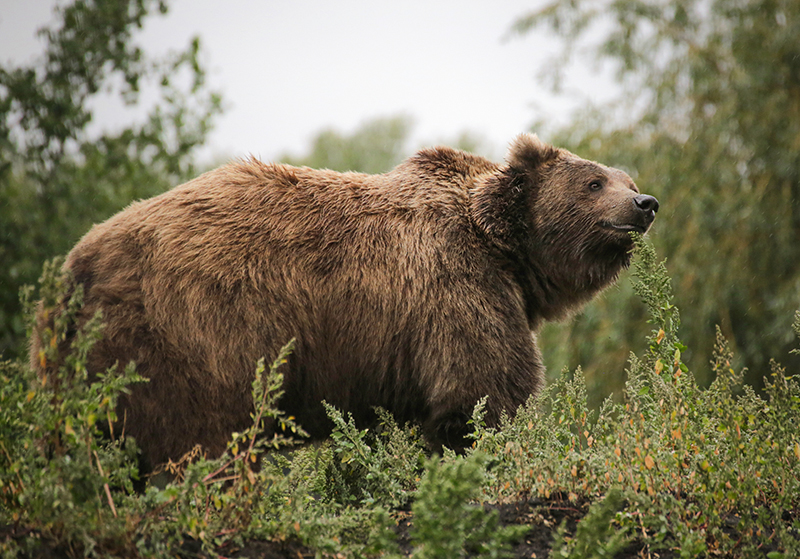 While I had lunch with my zookeeper friend, Serena, a couple of other people arrived. Coincidentally, they were also longtime friends of the park. Rather than the usual bear education presentation we’d seen several times, Serena gave the three of us a behind-the-scenes personal tour and visit with the bears.
While I had lunch with my zookeeper friend, Serena, a couple of other people arrived. Coincidentally, they were also longtime friends of the park. Rather than the usual bear education presentation we’d seen several times, Serena gave the three of us a behind-the-scenes personal tour and visit with the bears.
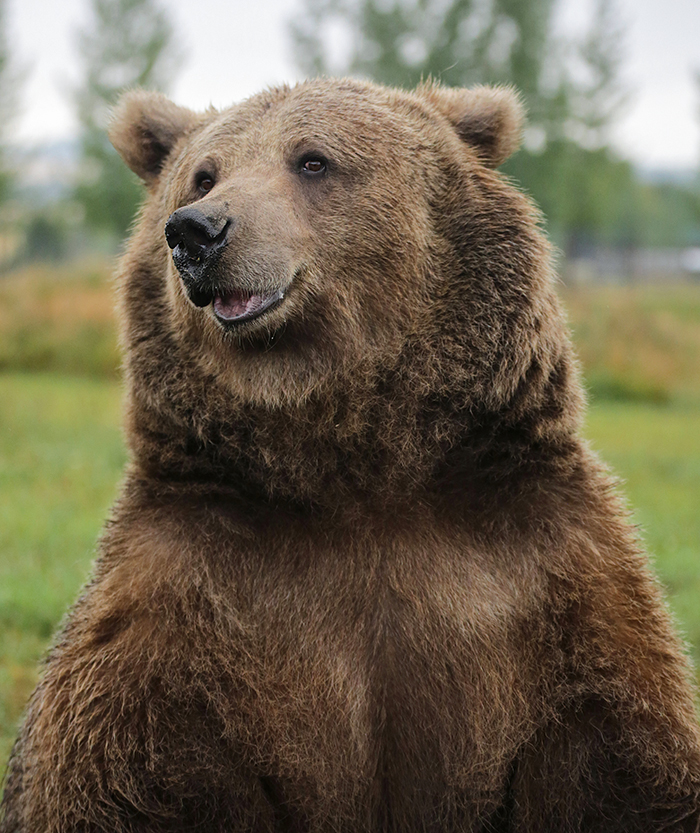 Cold, dark, and windy, the rain at least let up for a few hours. While the pictures I got weren’t impressive photographs on their own, some of these shots will be amazing for reference. I’ve written before about how sunny days aren’t great because they can wash out detail in the highlights and shadows, but an overcast day provided some very exciting photos of bear fur and features.
Cold, dark, and windy, the rain at least let up for a few hours. While the pictures I got weren’t impressive photographs on their own, some of these shots will be amazing for reference. I’ve written before about how sunny days aren’t great because they can wash out detail in the highlights and shadows, but an overcast day provided some very exciting photos of bear fur and features.
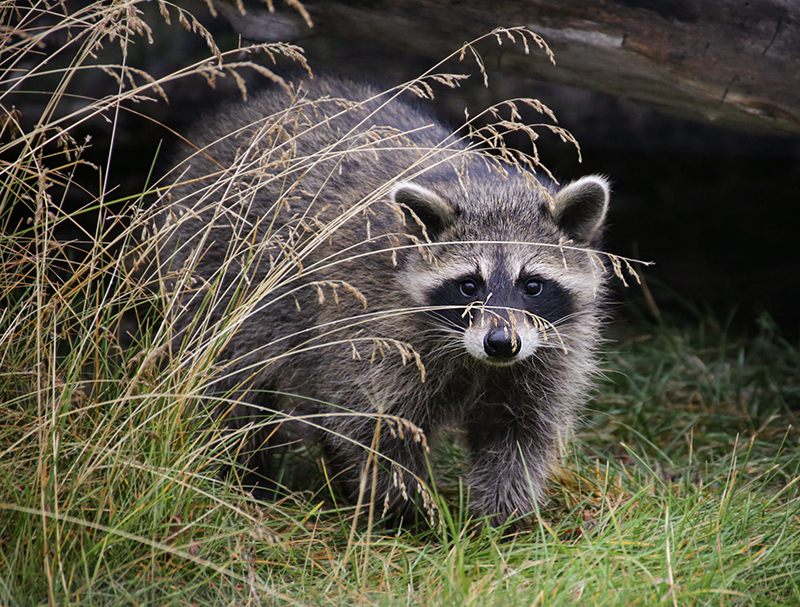 If that weren’t enough, Serena has been hand-raising an orphaned raccoon since he was tiny. Shonna I got to see him earlier this summer, but on this day, he was getting his first look at a much bigger world, as he was let loose for a bit to run and play in a large enclosure. If you’ve ever seen a cat or dog with the zoomies, imagine that with a raccoon. He was having a very good time.
If that weren’t enough, Serena has been hand-raising an orphaned raccoon since he was tiny. Shonna I got to see him earlier this summer, but on this day, he was getting his first look at a much bigger world, as he was let loose for a bit to run and play in a large enclosure. If you’ve ever seen a cat or dog with the zoomies, imagine that with a raccoon. He was having a very good time.
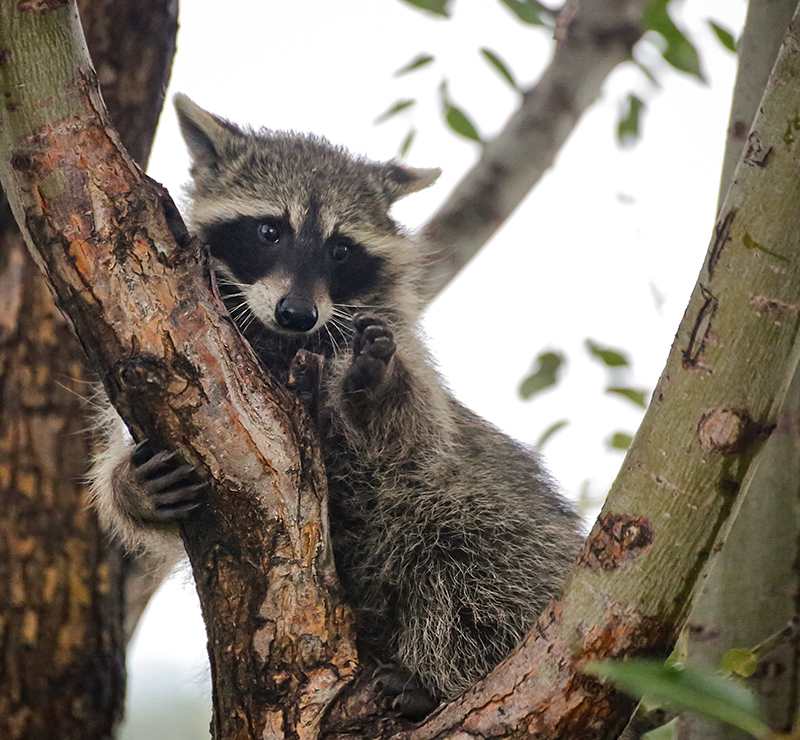 After the park, I took my parents out to dinner in Red Deer and spent the night at their place for a nice, albeit short, visit.
After the park, I took my parents out to dinner in Red Deer and spent the night at their place for a nice, albeit short, visit.
This past week, the cool fall weather has shown up. Though I’m not a fan of the winter that follows, fall is my favourite time of year. The light on the mountains around here is softer and ever-changing, and we get some beautiful sunrises, which I can see from my office window. And when the larches change colour, it’s like somebody spilled brilliant yellow and orange paint all over the place.
Though I generally dislike driving, the route south on Highway 40 through Kananaskis, up to the Highwood Pass is an exception. It’s the highest paved road in Canada and the spectacular scenery is some of the most beautiful in the world. While busy on weekends, self-employment affords me the luxury of going during the week. Thursday was a pretty day for a drive, and even though the larches haven’t changed yet, they’re beginning to. Traffic was light, the weather was great, and I enjoyed the 40-minute climb from Highway 1.
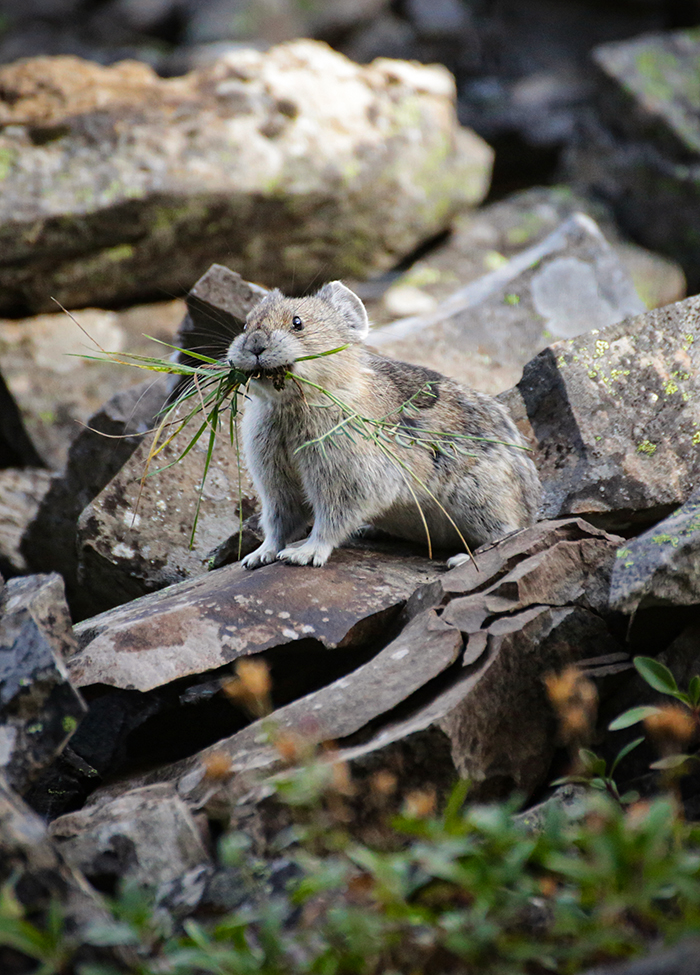 Several years ago, a local photographer told me about Rock Glacier, just off the highway below the Highwood Pass. He had said that if I wanted to see pikas, that was the place. It’s a massive scree slope of rocks, and I can’t even guess how many of the little ‘rock rabbits’ call it home.
Several years ago, a local photographer told me about Rock Glacier, just off the highway below the Highwood Pass. He had said that if I wanted to see pikas, that was the place. It’s a massive scree slope of rocks, and I can’t even guess how many of the little ‘rock rabbits’ call it home.
It’s hardly a secret, as the site has two extra parking lanes and several Alberta Parks educational signs about the critters.
Their peeping is unmistakable, but it can be hard to see them as they’re very small and perfectly camouflaged among the rocks. It’s only their darting movements that give them away. I’ll admit that chasing them around the rocks is part of the fun. They’ll scurry along routes only they can see, pausing on rocks along their path, perfect for photo ops.
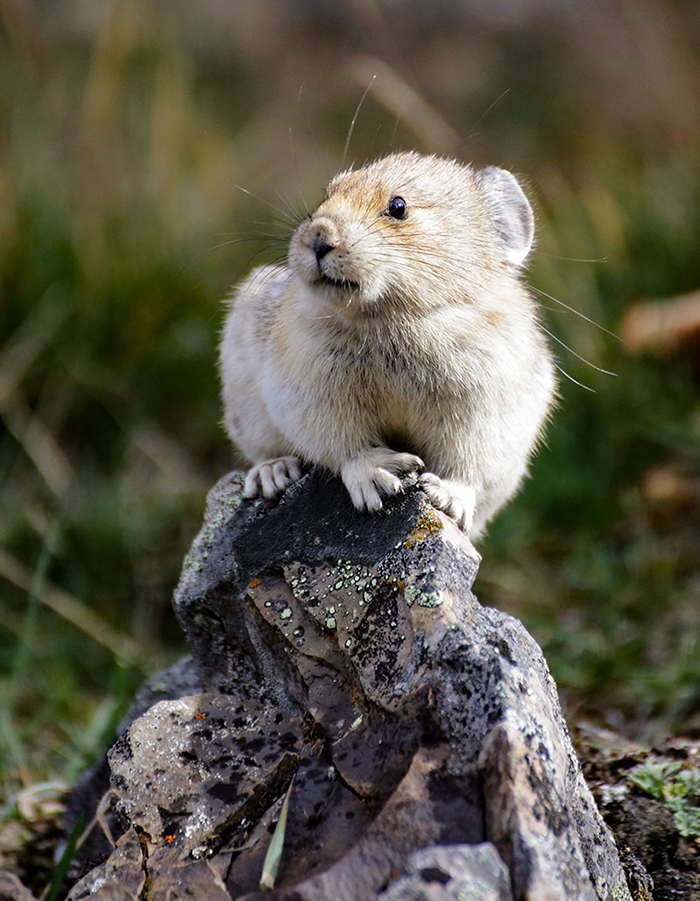 Their primary motivation is food, so they’re usually en route to one of the small patches of grass and vegetation among the rocks, where they’ll stuff their faces before running back to their stash. It’s fun to watch.
Their primary motivation is food, so they’re usually en route to one of the small patches of grass and vegetation among the rocks, where they’ll stuff their faces before running back to their stash. It’s fun to watch.
The challenge is usually to get a few pictures before they run out of range, but twice on this visit, I was delighted to see one running toward me. With each pause, I’d get a better shot until one eventually ran right by my foot, intent on a patch of green behind me. All I had to do was circle it and take more photos. They didn’t seem to mind my presence as long as I avoided quick movements.
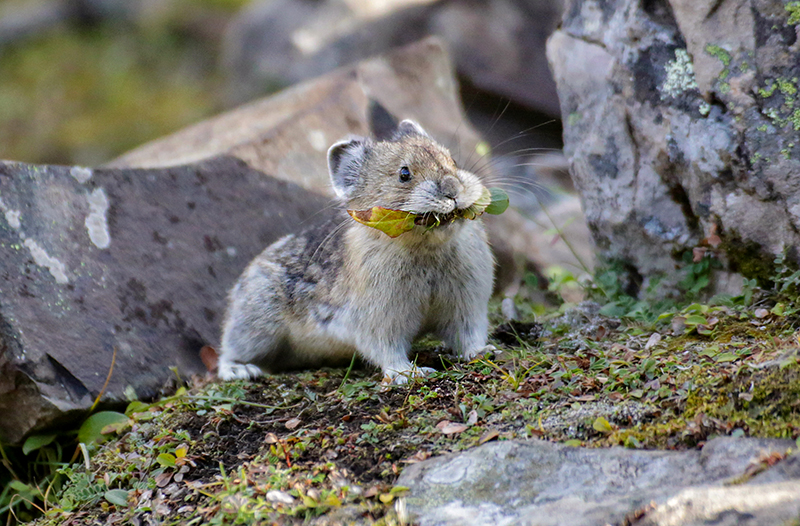 It can get cold up there at 2200m (7200 ft), and I always pack extra layers, but it was a pleasant fall morning, and I only needed a light jacket. On a few visits, there’ve been ten or 12 other people, often photographers with much bigger lenses than my 70-300mm, doing the same thing. But on this visit, I spent an hour and a half crawling over the rocks and snapping pics with the whole place to myself. Nobody else stopped.
It can get cold up there at 2200m (7200 ft), and I always pack extra layers, but it was a pleasant fall morning, and I only needed a light jacket. On a few visits, there’ve been ten or 12 other people, often photographers with much bigger lenses than my 70-300mm, doing the same thing. But on this visit, I spent an hour and a half crawling over the rocks and snapping pics with the whole place to myself. Nobody else stopped.
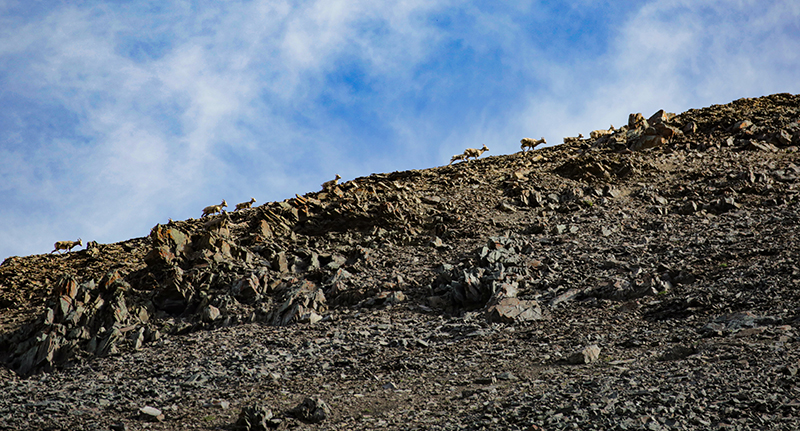 On each drive up to Rock Glacier, I usually see black bears or grizzlies, but none this time. They’re likely still low in the valleys, eating as much as possible before winter. But they can show up anywhere around here, and on these excursions, I’ve always got bear spray on my hip. Aside from the above pic of a line of bighorn sheep walking the top of the ridge, I only saw the wildlife I came for.
On each drive up to Rock Glacier, I usually see black bears or grizzlies, but none this time. They’re likely still low in the valleys, eating as much as possible before winter. But they can show up anywhere around here, and on these excursions, I’ve always got bear spray on my hip. Aside from the above pic of a line of bighorn sheep walking the top of the ridge, I only saw the wildlife I came for.
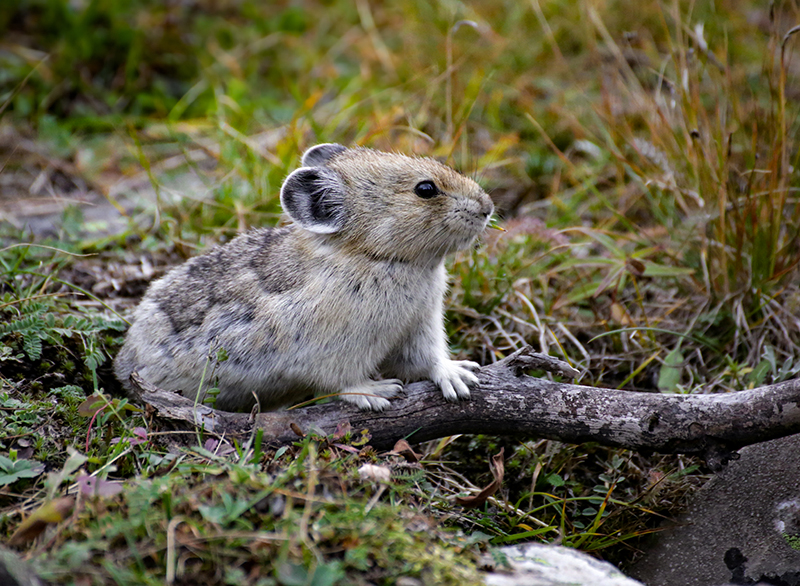 Though I have kept dozens of pika photos over the years, I’ve always felt I hadn’t quite got the one I wanted, that perfect photo to paint from. I finally got one on this trip, but I haven’t shared it in this post. It’ll just have to be a surprise.
Though I have kept dozens of pika photos over the years, I’ve always felt I hadn’t quite got the one I wanted, that perfect photo to paint from. I finally got one on this trip, but I haven’t shared it in this post. It’ll just have to be a surprise.
Now, you might be thinking, “I’m seeing plenty of photos lately, but where’s some new artwork on this artist’s website?”
I am working on several pieces and a commission right now. However, taking photos for future paintings is also a big part of my work. I can’t paint ‘cartoony, but real,’ if I don’t know what real looks like, and taking photos always inspires new paintings. Though I often plan to paint a critter and then go looking for reference, it’s frequently the photos that come first, inspiring the paintings that follow.



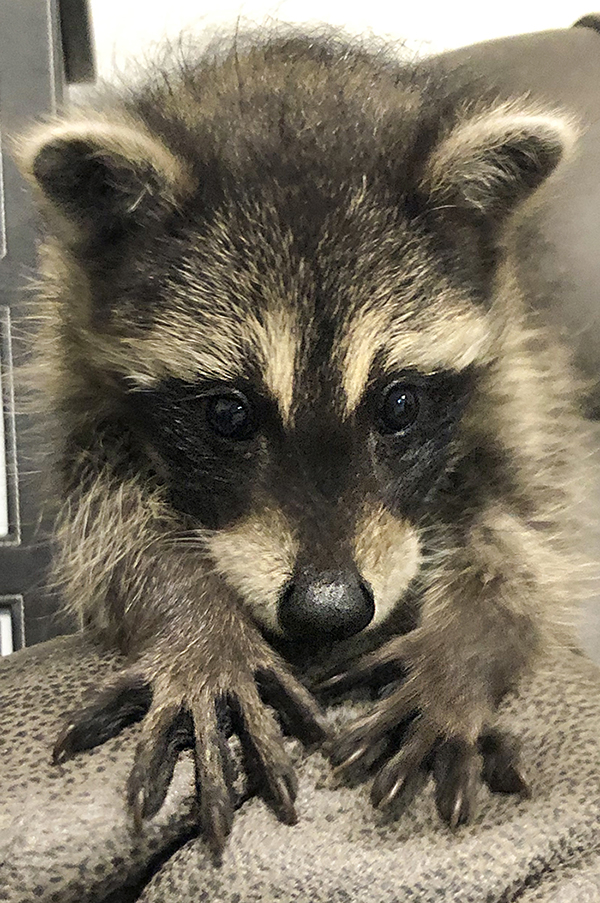 Despite the bright sun, I got some shots of the two black bear cubs. There might be inspiration for a painting or two in the few photos I kept, but I will let them simmer and review them in a few months. My mood and circumstances can colour my perception, so shots that don’t inspire me in August might push the right buttons in January.
Despite the bright sun, I got some shots of the two black bear cubs. There might be inspiration for a painting or two in the few photos I kept, but I will let them simmer and review them in a few months. My mood and circumstances can colour my perception, so shots that don’t inspire me in August might push the right buttons in January.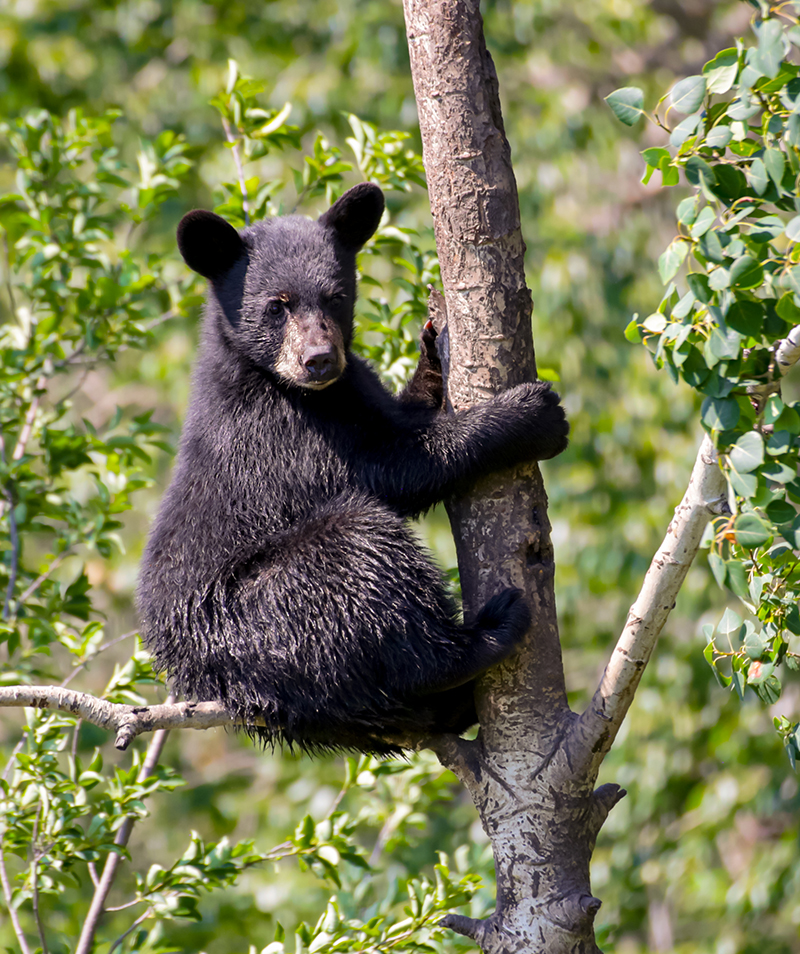 Although I prefer to take my own reference photos whenever possible, I am not interested in becoming a professional photographer. Connecting the dots between aperture, shutter speed and ISO and understanding how they work together, it just seems like math and bores the hell out of me.
Although I prefer to take my own reference photos whenever possible, I am not interested in becoming a professional photographer. Connecting the dots between aperture, shutter speed and ISO and understanding how they work together, it just seems like math and bores the hell out of me.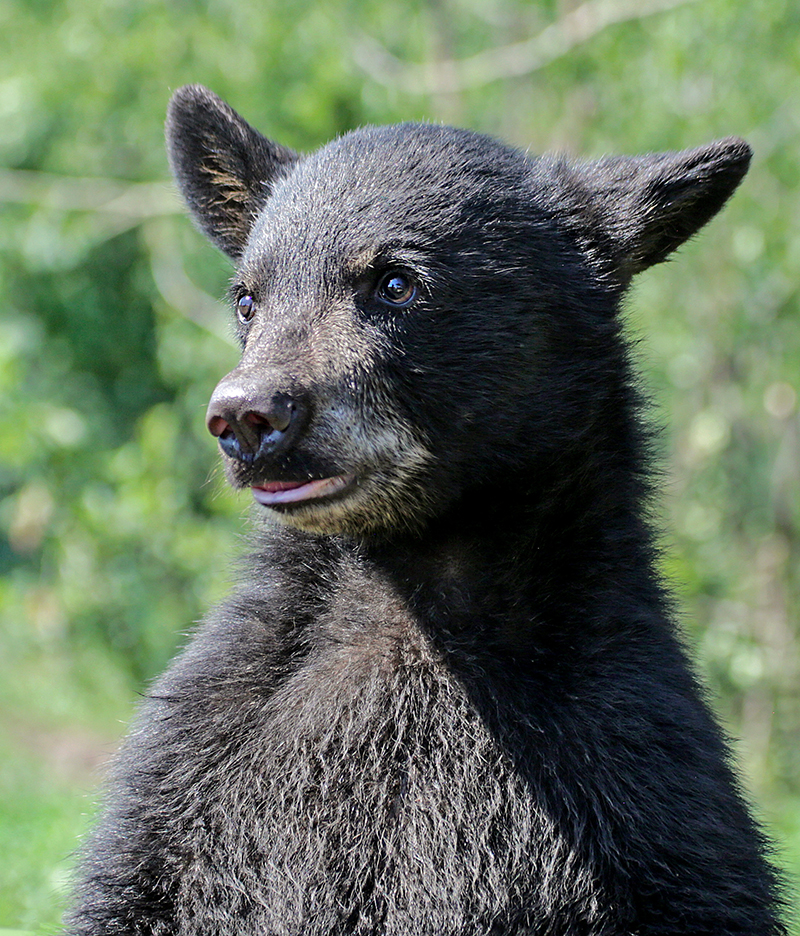 I know that hook because I have it for drawing and painting. I can spend hours detailing little hairs or working to get the texture of a bear’s nose just right. I am confident that would be incredibly dull for most people.
I know that hook because I have it for drawing and painting. I can spend hours detailing little hairs or working to get the texture of a bear’s nose just right. I am confident that would be incredibly dull for most people.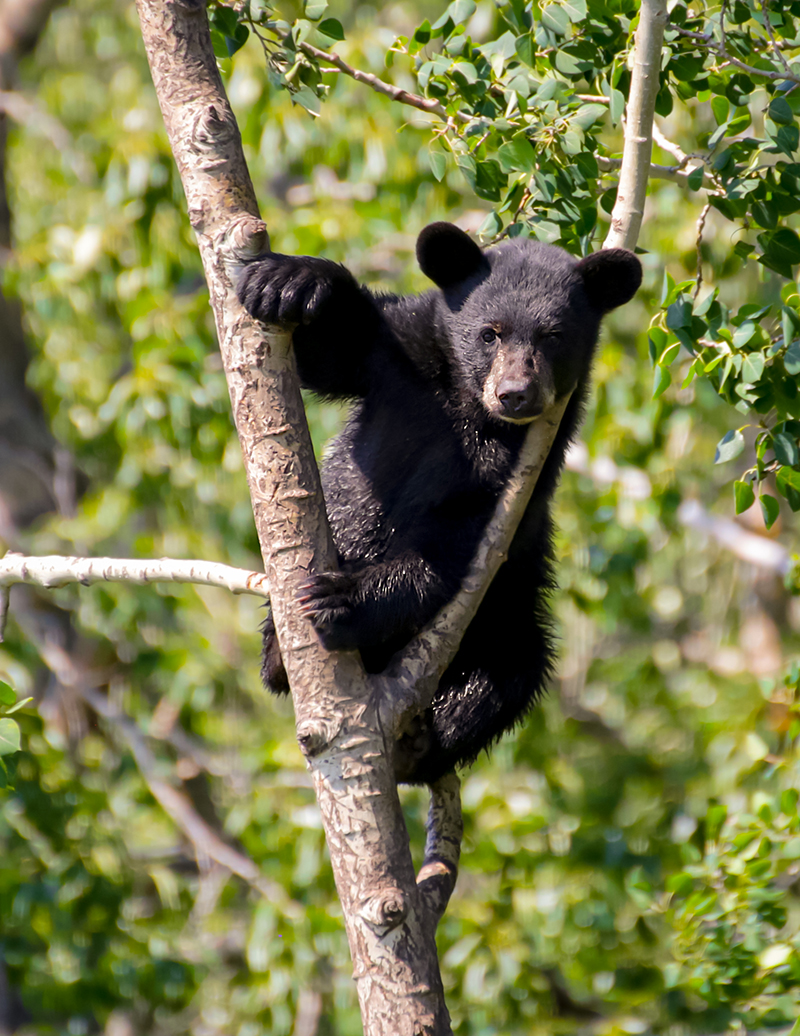 So, while I revel in learning a photography trick or technique that helps me take better reference, like
So, while I revel in learning a photography trick or technique that helps me take better reference, like 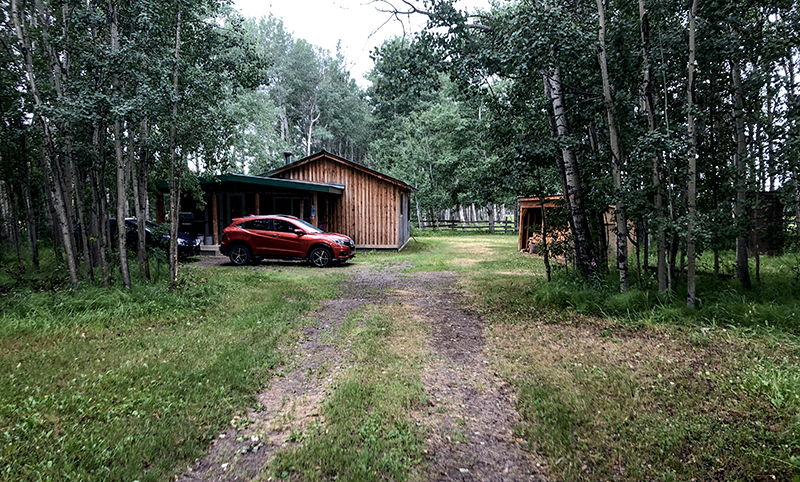 At the end of July, on the day I sent
At the end of July, on the day I sent 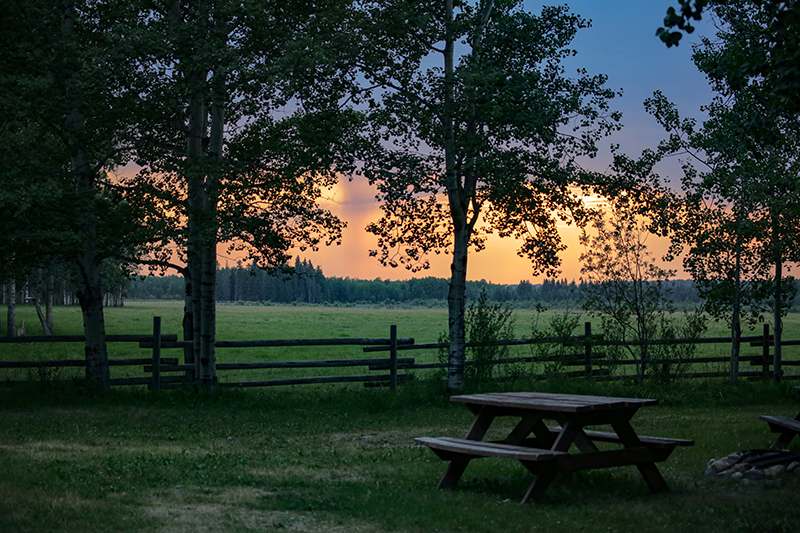 Though most of Alberta had been dealing with heavy wildfire smoke that week, it completely cleared up by the time I got to the cabin and stayed that way the whole four days we were there. The temperature even dropped to a comfortable level and we got some welcome rain. In fact, on the first night, it cooled off so much that we wondered if we might need a fire in the wood stove. Given the oppressive heat we’d just escaped, we had no appetite for that. But wearing long pants and a hoodie seemed strange that evening, given how uncomfortable the past month had been.
Though most of Alberta had been dealing with heavy wildfire smoke that week, it completely cleared up by the time I got to the cabin and stayed that way the whole four days we were there. The temperature even dropped to a comfortable level and we got some welcome rain. In fact, on the first night, it cooled off so much that we wondered if we might need a fire in the wood stove. Given the oppressive heat we’d just escaped, we had no appetite for that. But wearing long pants and a hoodie seemed strange that evening, given how uncomfortable the past month had been.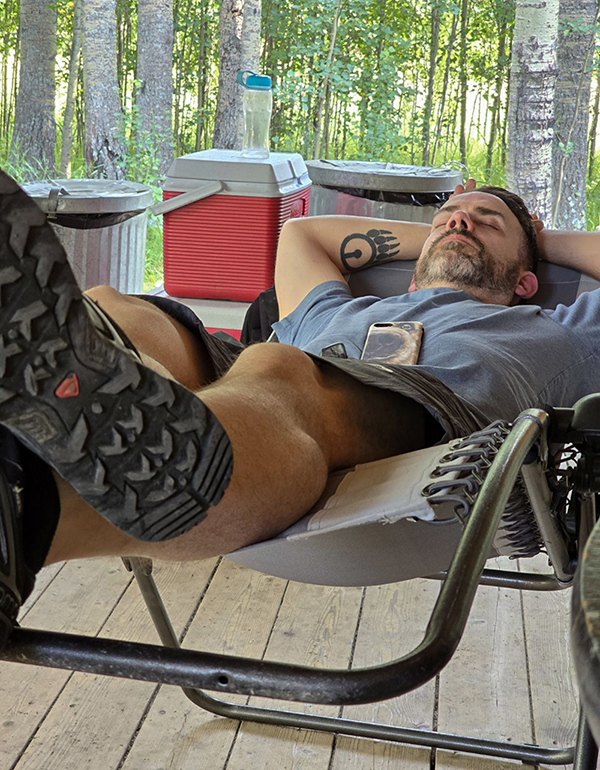 Even though I couldn’t turn off my busy brain, it was good to get away. We did what we always do: sat around talking, napped on the decks in the afternoon, walked around the large property, and played guitar, cards and Scrabble. Yes, we’re boring old men.
Even though I couldn’t turn off my busy brain, it was good to get away. We did what we always do: sat around talking, napped on the decks in the afternoon, walked around the large property, and played guitar, cards and Scrabble. Yes, we’re boring old men.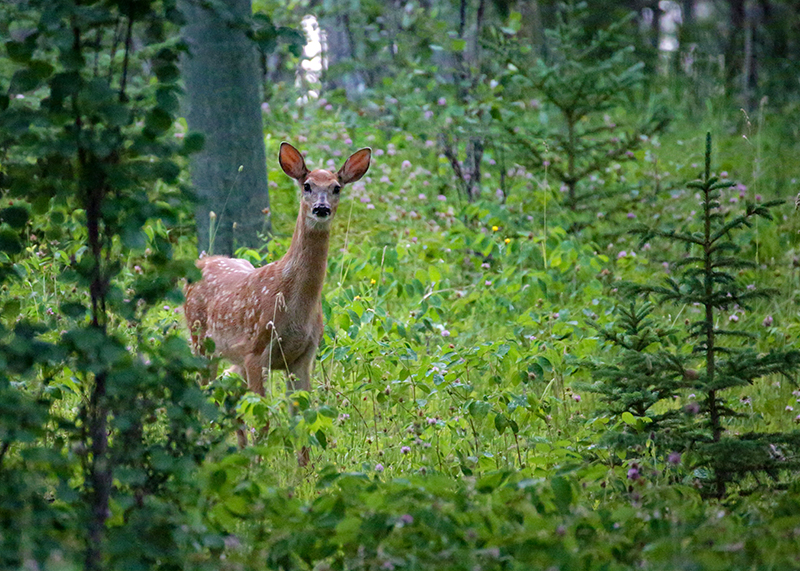 It was a very pretty and delightfully cool morning, and I knew there would be plenty of time to nap on the deck later in the day, so my mood improved. I wandered up the road, spooked a few deer and watched them take off across the neighbour’s newly cut and bailed hayfield. I kept my eyes peeled for other wildlife, hoping for an owl or coyote.
It was a very pretty and delightfully cool morning, and I knew there would be plenty of time to nap on the deck later in the day, so my mood improved. I wandered up the road, spooked a few deer and watched them take off across the neighbour’s newly cut and bailed hayfield. I kept my eyes peeled for other wildlife, hoping for an owl or coyote.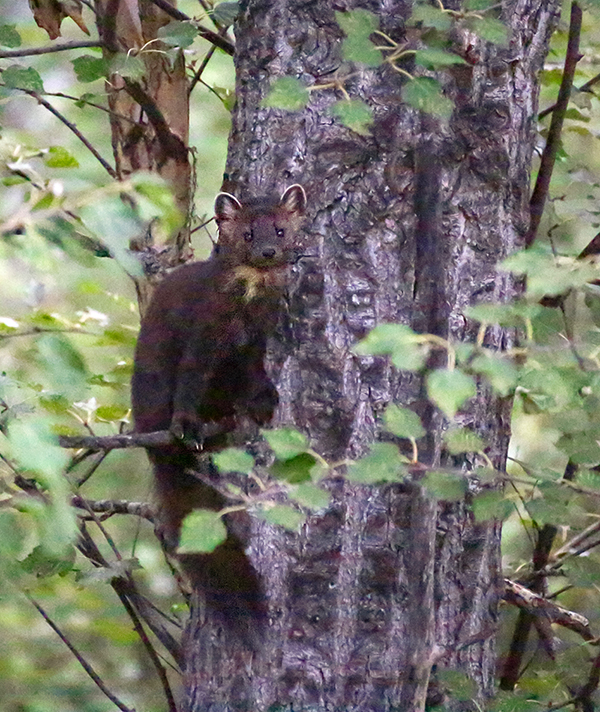 The base of the tree she ran up to escape was twenty feet below me down the steep bank, so her ‘safe height’ now put her at eye level with me as I stood on the road. And she was NOT happy about it.
The base of the tree she ran up to escape was twenty feet below me down the steep bank, so her ‘safe height’ now put her at eye level with me as I stood on the road. And she was NOT happy about it.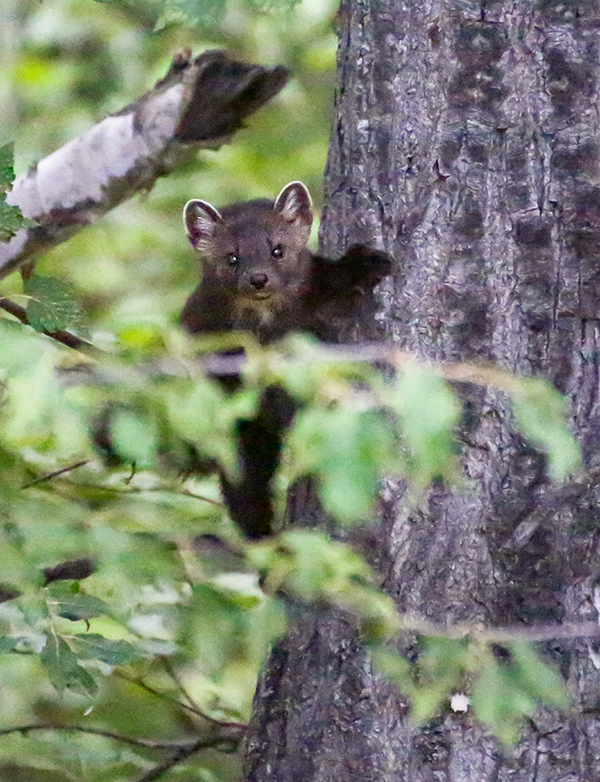 Though I had done what I could to boost my exposure compensation to account for the dark area in which I was shooting, I needed to keep the shutter speed high to try to capture this quick little marten. In the end, none of the pictures I got were very good, but I enjoyed the moment. I don’t know if I have ever seen a pine marten in the wild, but I was pleased with the early morning treat.
Though I had done what I could to boost my exposure compensation to account for the dark area in which I was shooting, I needed to keep the shutter speed high to try to capture this quick little marten. In the end, none of the pictures I got were very good, but I enjoyed the moment. I don’t know if I have ever seen a pine marten in the wild, but I was pleased with the early morning treat.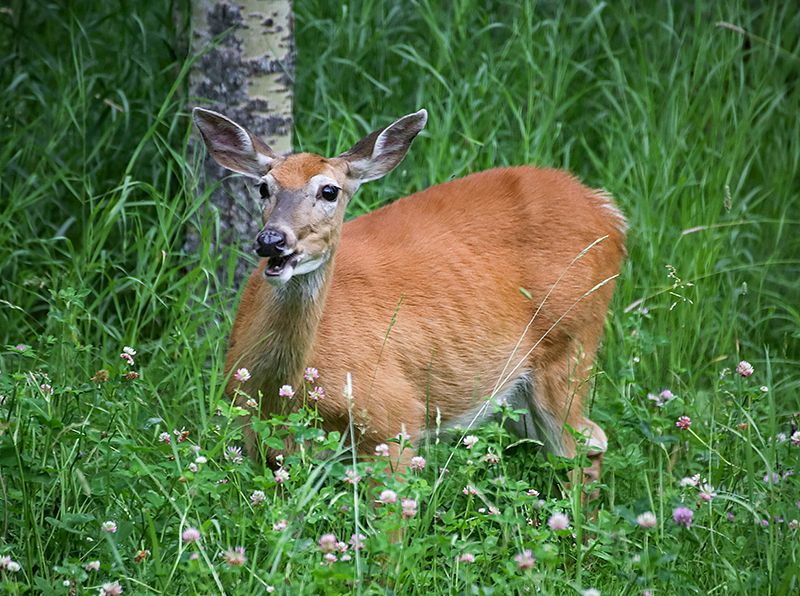 .
.
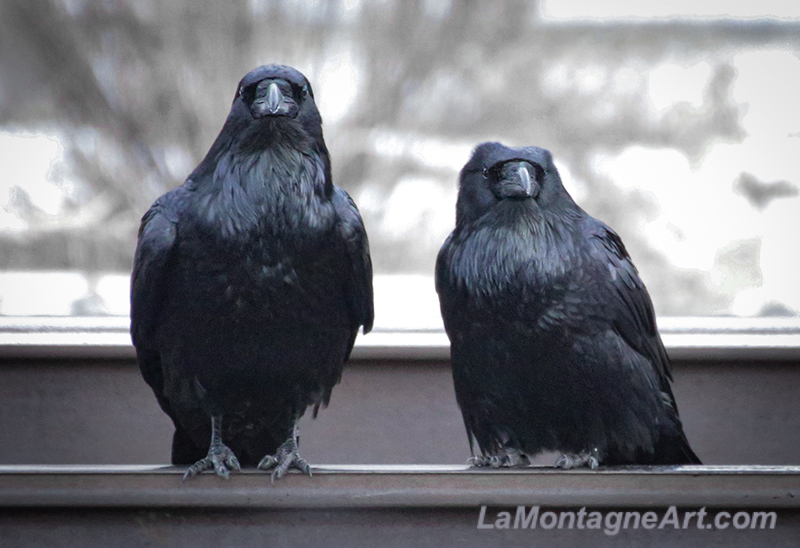 You can attribute it to seasonal affective disorder, lack of light, or the extreme cold weather that settled in this week, but January is not my favourite month. I am at my most miserable and misanthropic this time of year, coupled with a short fuse. My jaw has been bugging me for a couple of weeks, a consequence of unconscious clenching and teeth grinding. I’m not sleeping well and have bad dreams.
You can attribute it to seasonal affective disorder, lack of light, or the extreme cold weather that settled in this week, but January is not my favourite month. I am at my most miserable and misanthropic this time of year, coupled with a short fuse. My jaw has been bugging me for a couple of weeks, a consequence of unconscious clenching and teeth grinding. I’m not sleeping well and have bad dreams.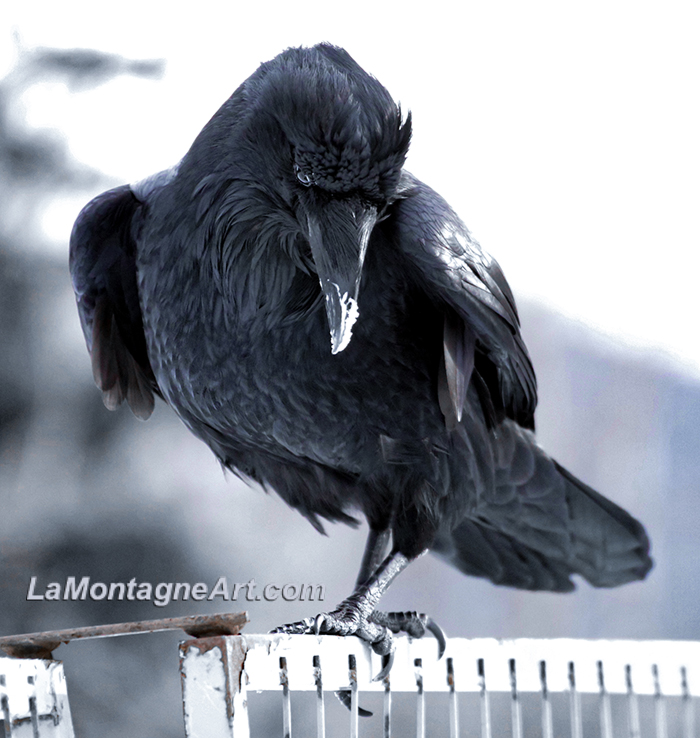 But at the moment, each
But at the moment, each 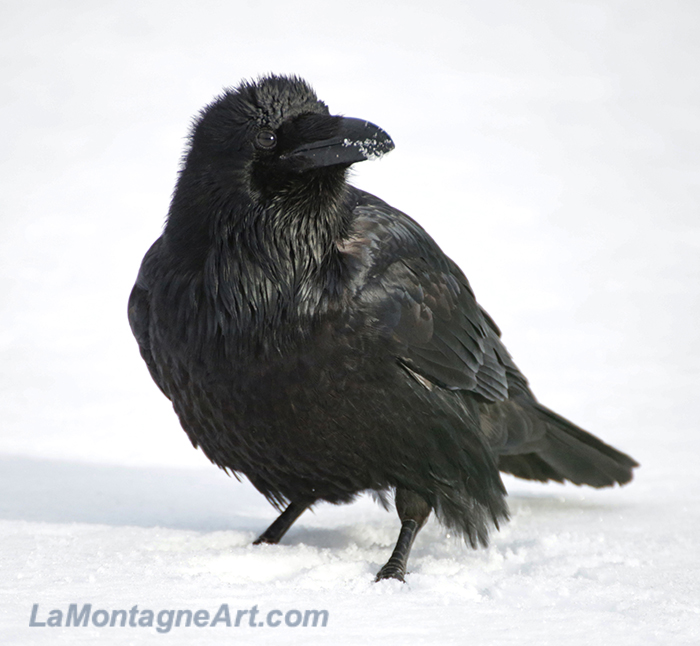 On the way, there’s a long stretch of paved pathway beside the train tracks. It runs behind another grocery store, recycling drop-off, and Canadian Tire and several ravens hang out in the area, scavenging for scraps.
On the way, there’s a long stretch of paved pathway beside the train tracks. It runs behind another grocery store, recycling drop-off, and Canadian Tire and several ravens hang out in the area, scavenging for scraps.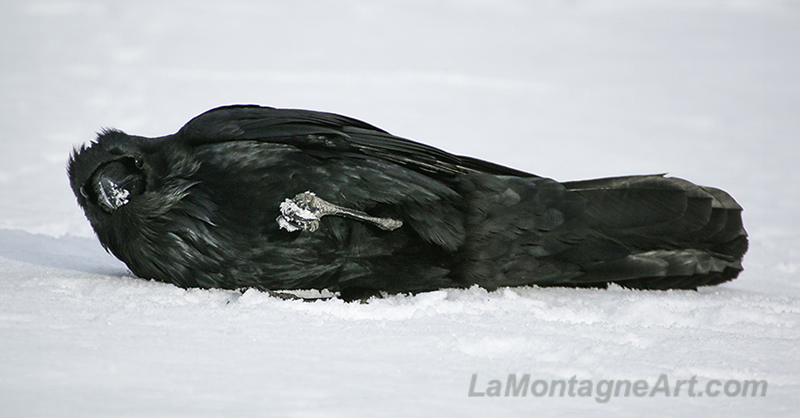 But when a raven flops down on his back and rolls around in the snow, pausing several times to look right into my lens, it’s hard not to imagine it’s doing it for my benefit. I took quite a few shots of this clown before he (or she) finally got back on his feet.
But when a raven flops down on his back and rolls around in the snow, pausing several times to look right into my lens, it’s hard not to imagine it’s doing it for my benefit. I took quite a few shots of this clown before he (or she) finally got back on his feet.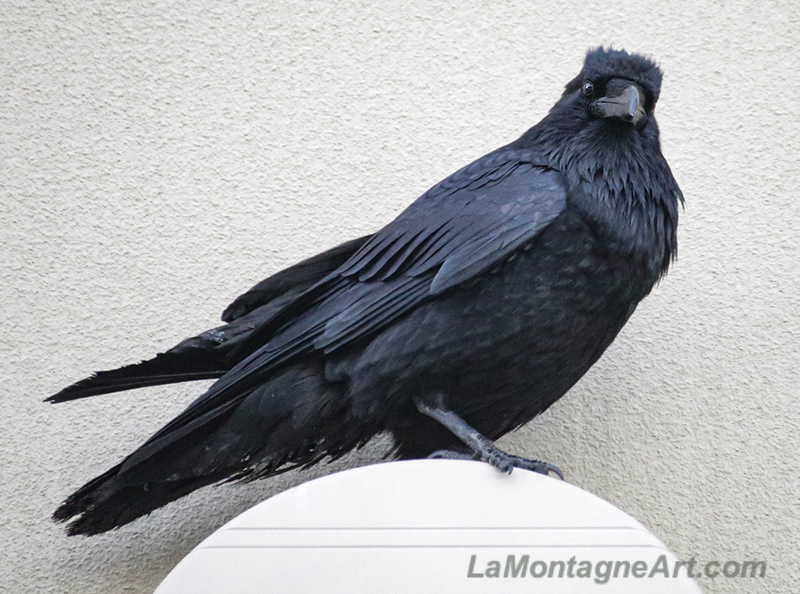 Thanks to a recent photo tip technique on my friend
Thanks to a recent photo tip technique on my friend 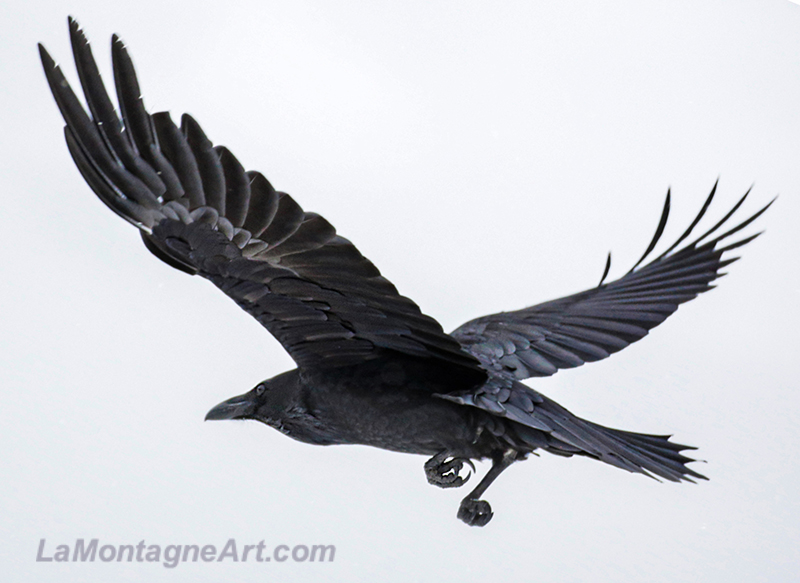 While a professional photographer might deem them unworthy for prints or portfolio pieces, I use the photos strictly for reference, so any flaws don’t matter.
While a professional photographer might deem them unworthy for prints or portfolio pieces, I use the photos strictly for reference, so any flaws don’t matter.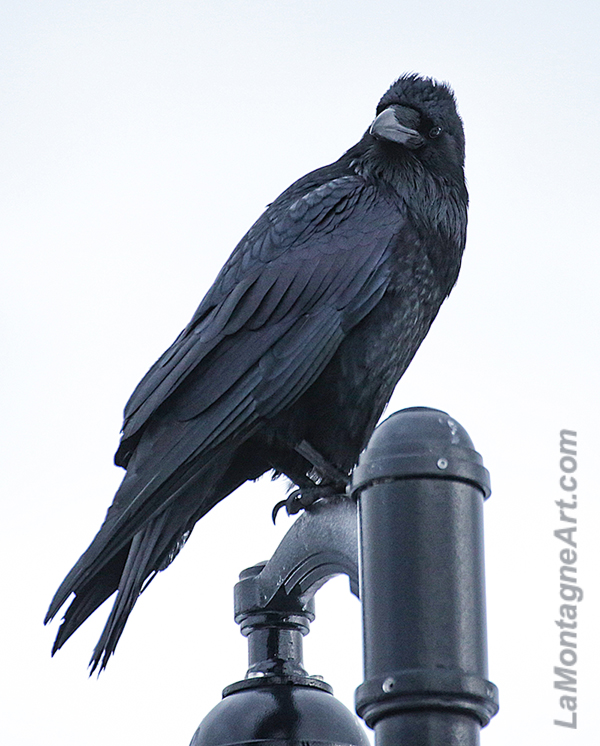 Though I’m struggling to find my creative spark right now, I know it will return as spring gets closer, and my mood will improve with more sunlight and warmer weather. It always does. And should I want to paint more ravens then, I’ll be grateful I forced myself to get out now and that I took my camera with me, even though I didn’t feel like it.
Though I’m struggling to find my creative spark right now, I know it will return as spring gets closer, and my mood will improve with more sunlight and warmer weather. It always does. And should I want to paint more ravens then, I’ll be grateful I forced myself to get out now and that I took my camera with me, even though I didn’t feel like it.

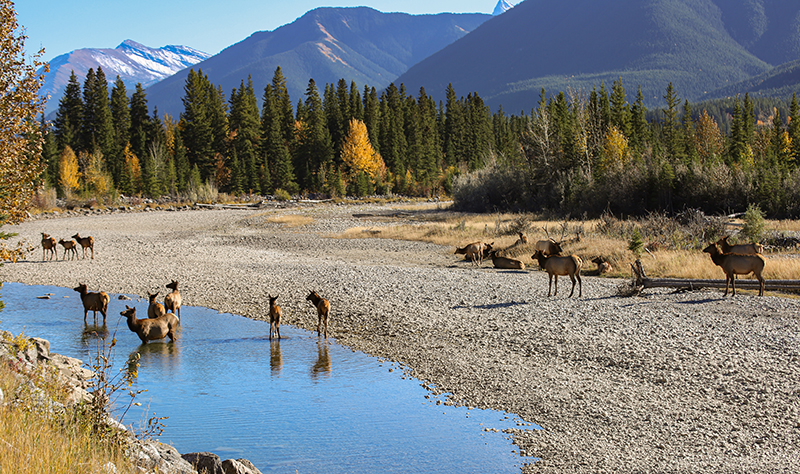 A couple of weeks ago, I biked a trail between a suburban neighbourhood and the Canmore Golf Course. It’s a popular pretty route in the trees, and I’ve taken it often. Rounding a turn, I encountered a large harem of elk lying down in the trees next to the path, with one very large bull elk standing among them.
A couple of weeks ago, I biked a trail between a suburban neighbourhood and the Canmore Golf Course. It’s a popular pretty route in the trees, and I’ve taken it often. Rounding a turn, I encountered a large harem of elk lying down in the trees next to the path, with one very large bull elk standing among them.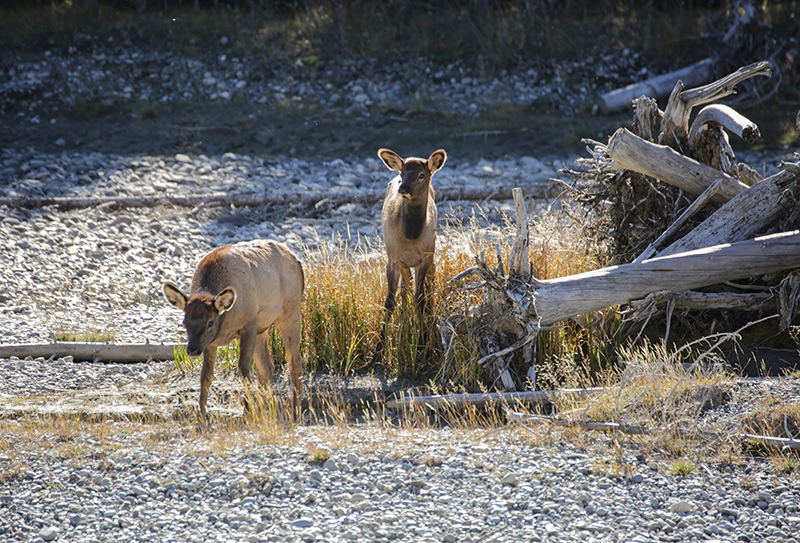 It is maddening to explain to a tourist that they are too close to an elk and, for their own safety, they should move away, only to have them dismiss you with a wave or a middle finger, saying, “Yeah, yeah, mind your own business.”
It is maddening to explain to a tourist that they are too close to an elk and, for their own safety, they should move away, only to have them dismiss you with a wave or a middle finger, saying, “Yeah, yeah, mind your own business.”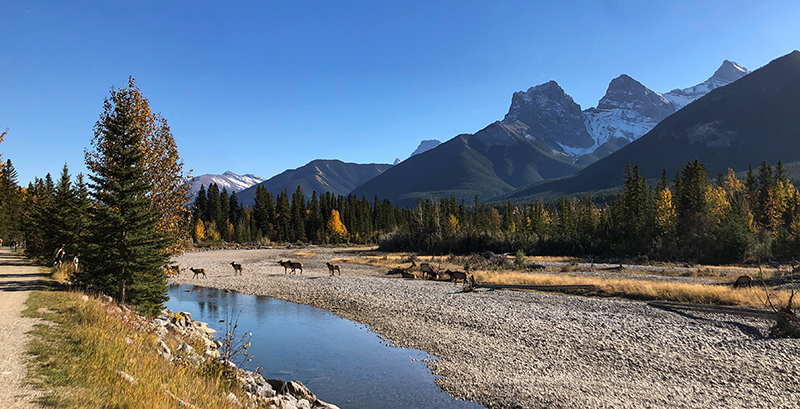 It was an ideal situation for wildlife watching because people could look as long as they wanted and take pictures, and nobody was in danger. I expected somebody might foolishly climb down the bank to get closer, but fortunately, no one did.
It was an ideal situation for wildlife watching because people could look as long as they wanted and take pictures, and nobody was in danger. I expected somebody might foolishly climb down the bank to get closer, but fortunately, no one did.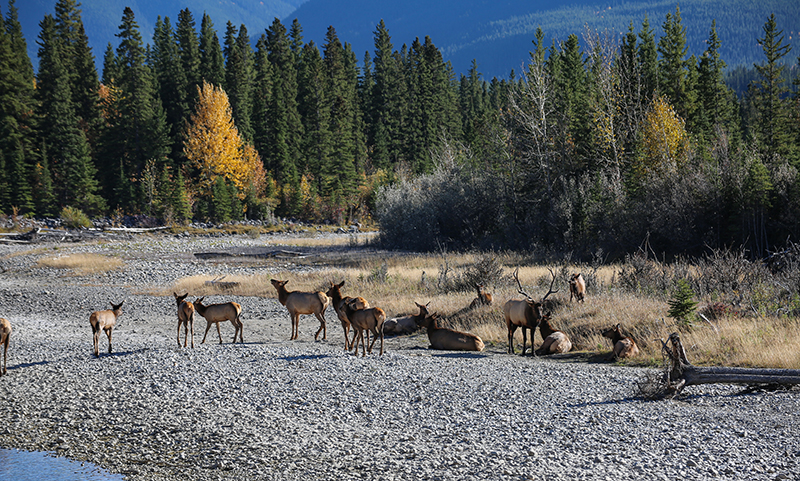 From a photography perspective, the conditions were not good. The bright afternoon sun, lower in the cloudless sky this time of year, was directly across from me. I was shooting handheld at full zoom at 300mm. I probably should have gone with a higher shutter speed, but I often get that wrong. I’m only keeping a dozen of the hundreds of photos I took. While none are suitable for photo reference, I enjoyed the experience, especially taking pics of this impressive fellow.
From a photography perspective, the conditions were not good. The bright afternoon sun, lower in the cloudless sky this time of year, was directly across from me. I was shooting handheld at full zoom at 300mm. I probably should have gone with a higher shutter speed, but I often get that wrong. I’m only keeping a dozen of the hundreds of photos I took. While none are suitable for photo reference, I enjoyed the experience, especially taking pics of this impressive fellow.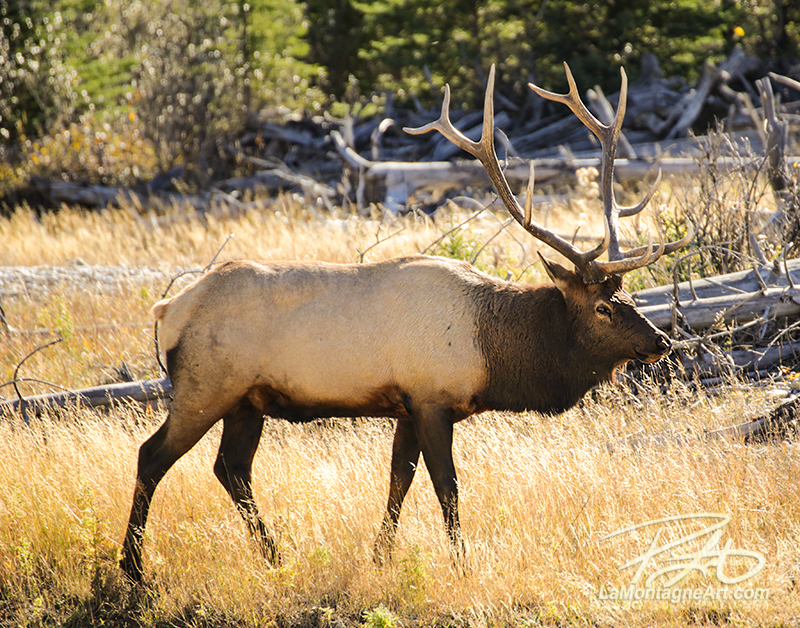 I’ve lived here for almost thirty years and still love seeing wildlife, even the common sightings of deer, elk and bighorn sheep. Parking the bike off the path for a couple of hours, snapping photos, listening to a bugling bull, and watching a herd of elk on a beautiful warm fall day in the mountains was time well spent.
I’ve lived here for almost thirty years and still love seeing wildlife, even the common sightings of deer, elk and bighorn sheep. Parking the bike off the path for a couple of hours, snapping photos, listening to a bugling bull, and watching a herd of elk on a beautiful warm fall day in the mountains was time well spent.
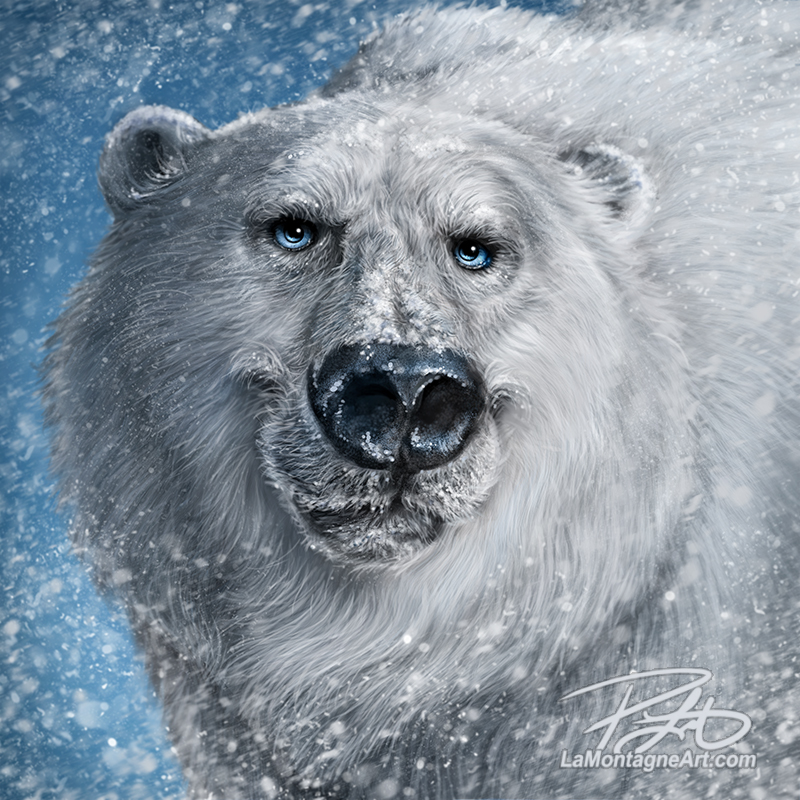 While I’m not a big fan of the season, I love winter colours, the blues, greys and whites. Seems like I’m on a bit of a
While I’m not a big fan of the season, I love winter colours, the blues, greys and whites. Seems like I’m on a bit of a 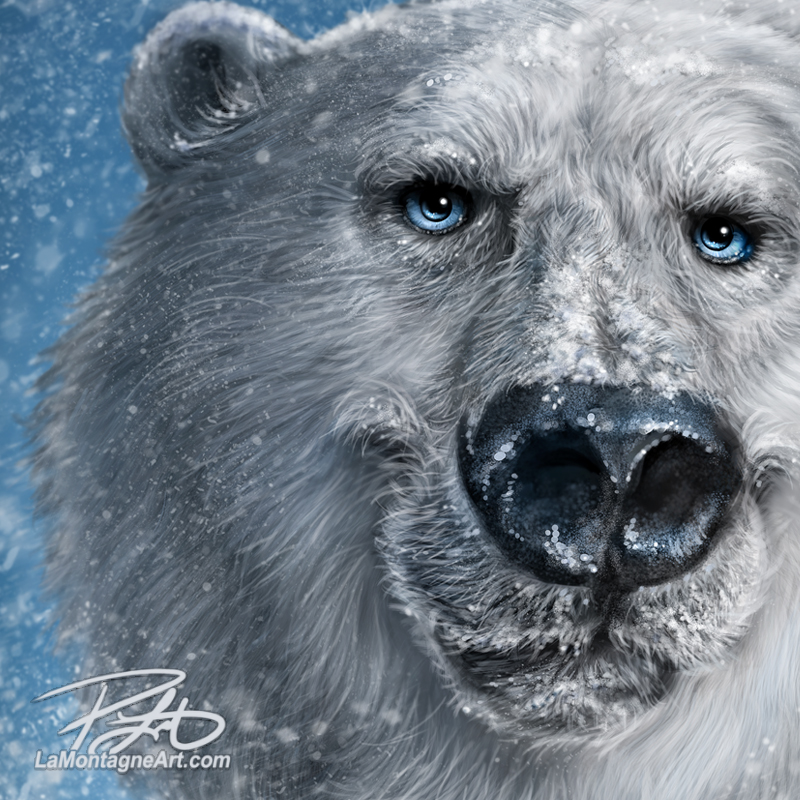 My friend
My friend 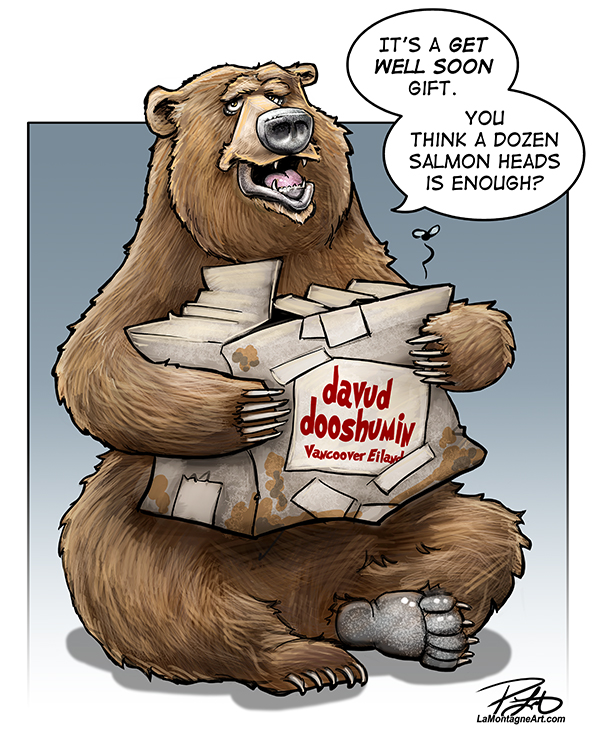
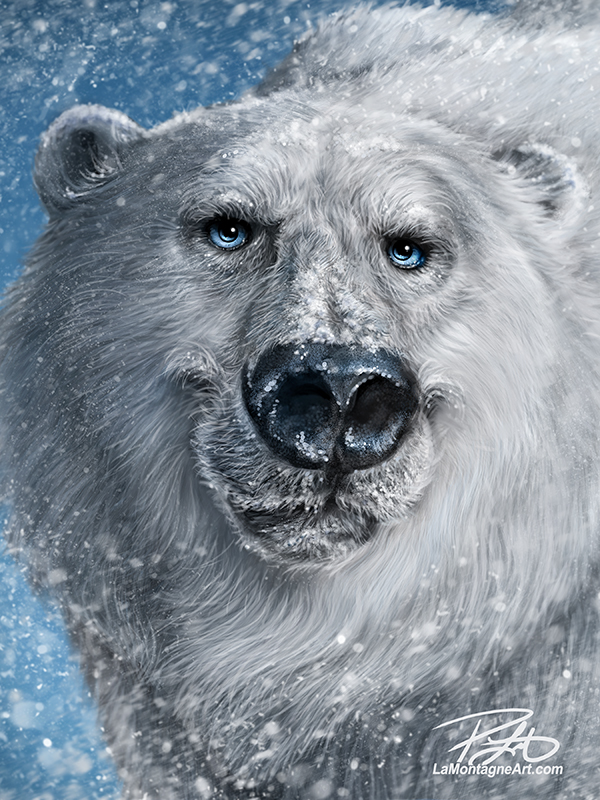 One of the challenges with a square format painting is that I need to crop it for my standard 11”x14” print, either vertical or horizontal. I tried both layouts, and vertical was the clear winner. Of course, you can always order the original square format as a canvas or metal print.
One of the challenges with a square format painting is that I need to crop it for my standard 11”x14” print, either vertical or horizontal. I tried both layouts, and vertical was the clear winner. Of course, you can always order the original square format as a canvas or metal print. 
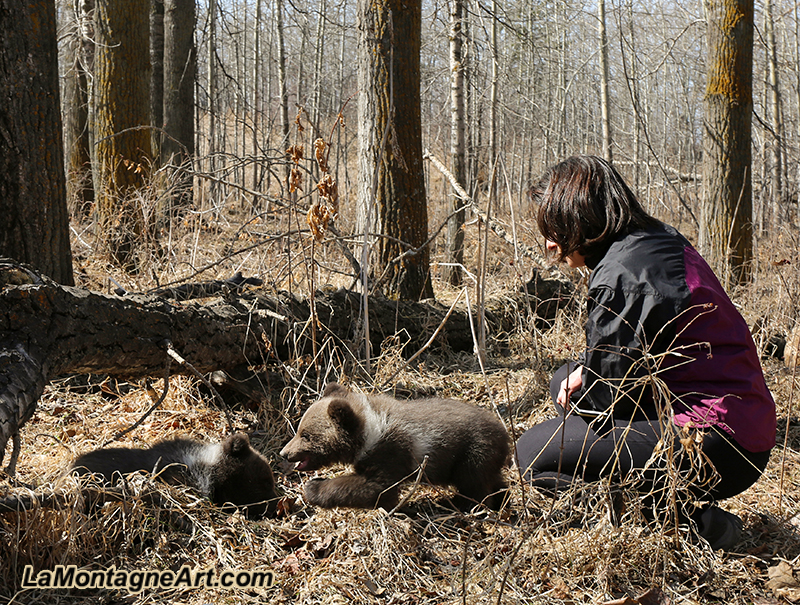 Earlier this week, Shonna and I were thrilled to be invited to
Earlier this week, Shonna and I were thrilled to be invited to 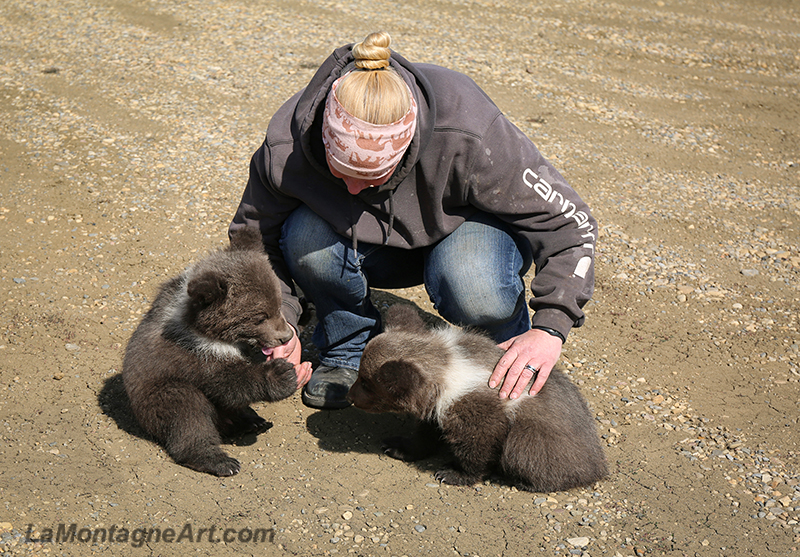
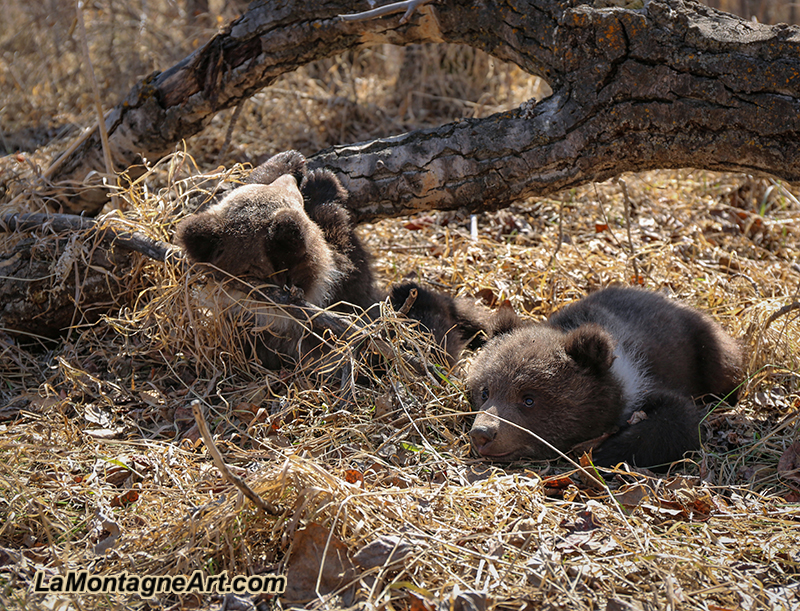 It’s with no small amount of gratitude that I enjoy such a close relationship with Discovery Wildlife Park. Their allowing me close contact with the animals over the past several years is a profound trust I don’t take lightly.
It’s with no small amount of gratitude that I enjoy such a close relationship with Discovery Wildlife Park. Their allowing me close contact with the animals over the past several years is a profound trust I don’t take lightly.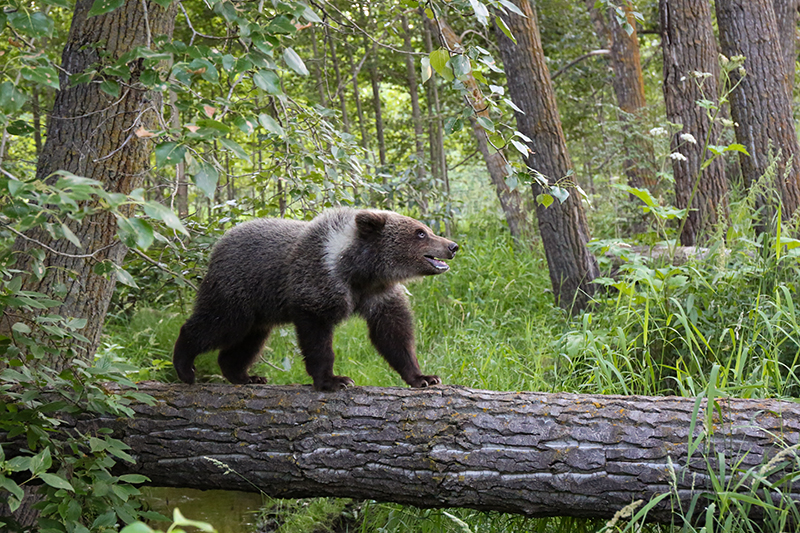 When they’re small, many of the animals spend plenty of time in these woods, where they can run, explore, climb trees, eat berries, and play.
When they’re small, many of the animals spend plenty of time in these woods, where they can run, explore, climb trees, eat berries, and play.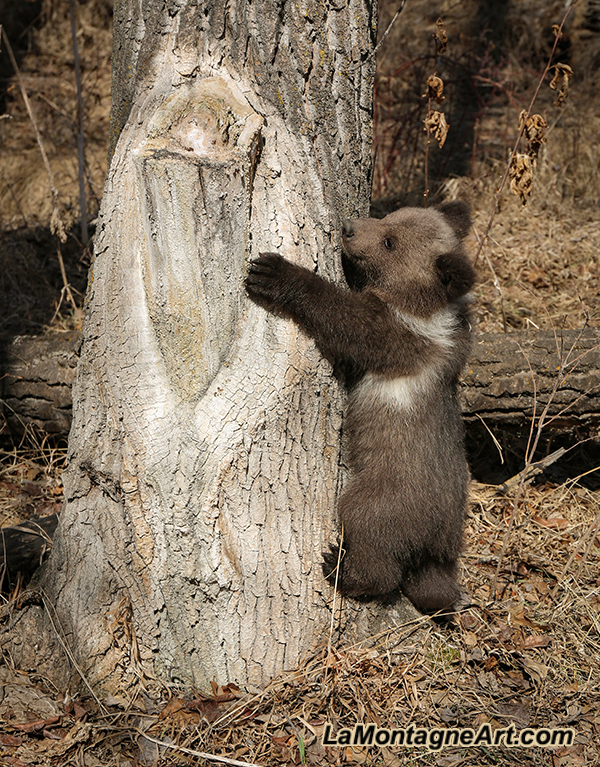 The following morning, I sent Serena a text asking how Piper was doing.
The following morning, I sent Serena a text asking how Piper was doing.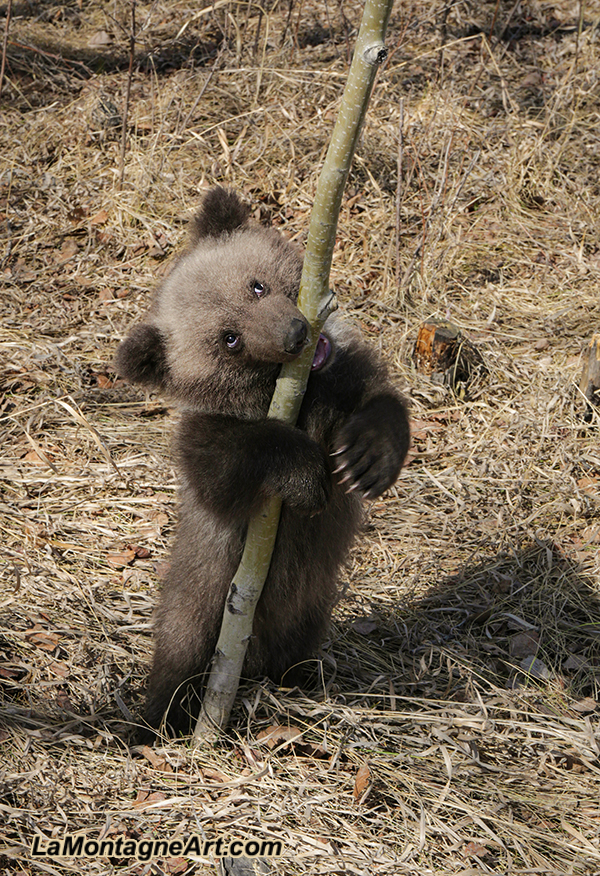 Bos was much more subdued, a little lazier, but curious and seemed to be enjoying himself as he chewed on trees, dug in the dirt, and wrestled with his adopted sibling.
Bos was much more subdued, a little lazier, but curious and seemed to be enjoying himself as he chewed on trees, dug in the dirt, and wrestled with his adopted sibling.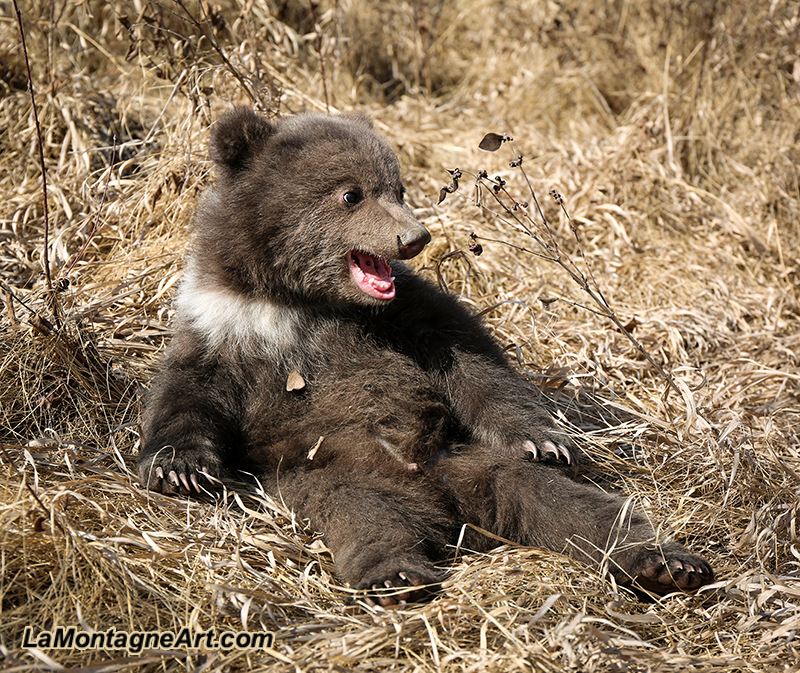
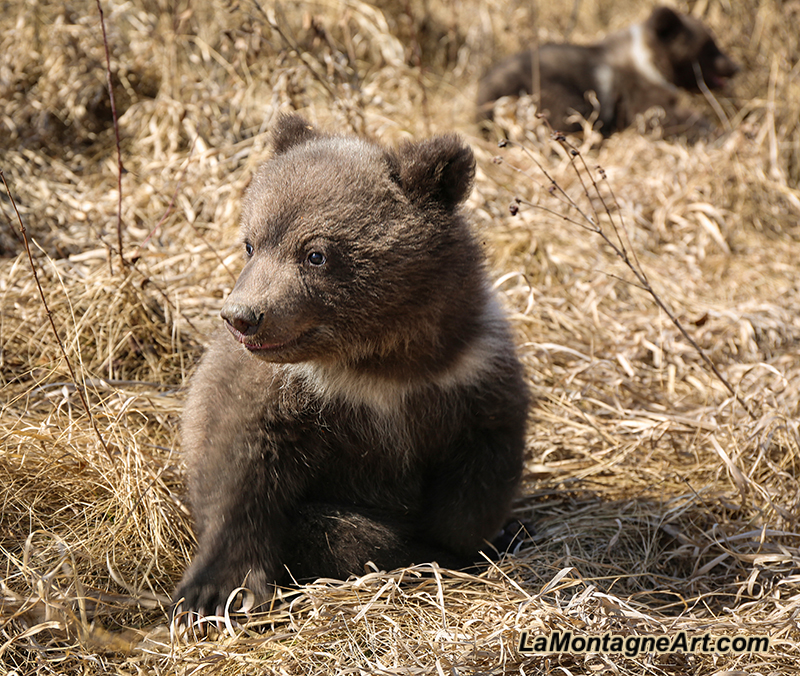
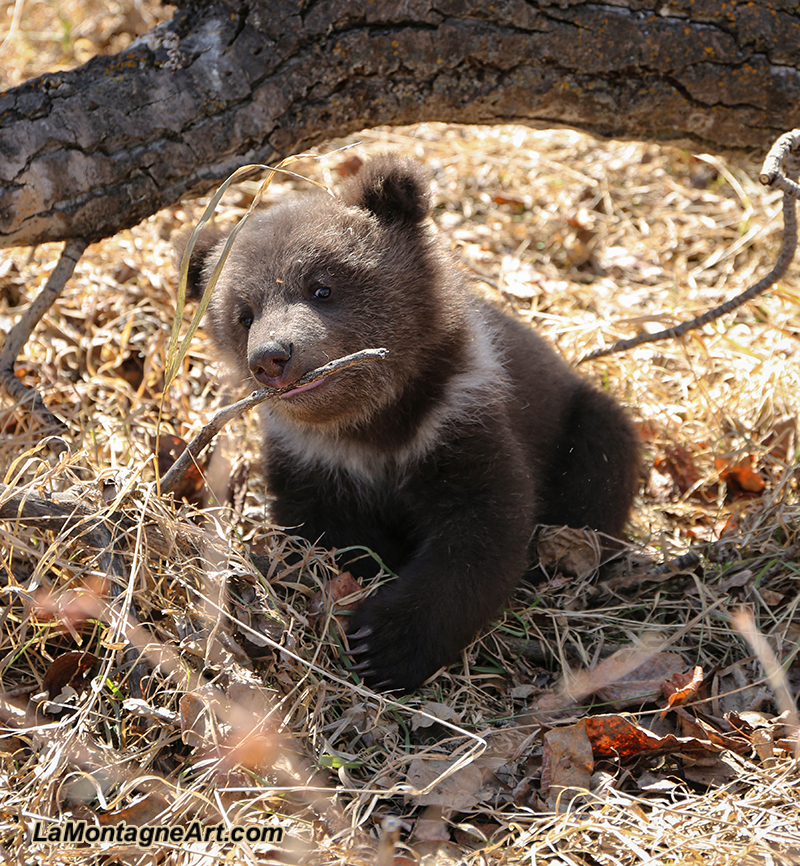 Though she’s always had an overall genial way about her, Berkley went through a bit of a rebellious teenage phase where she would push Serena’s buttons to test her boundaries. It’ll be interesting to see how these cubs grow into their personalities.
Though she’s always had an overall genial way about her, Berkley went through a bit of a rebellious teenage phase where she would push Serena’s buttons to test her boundaries. It’ll be interesting to see how these cubs grow into their personalities.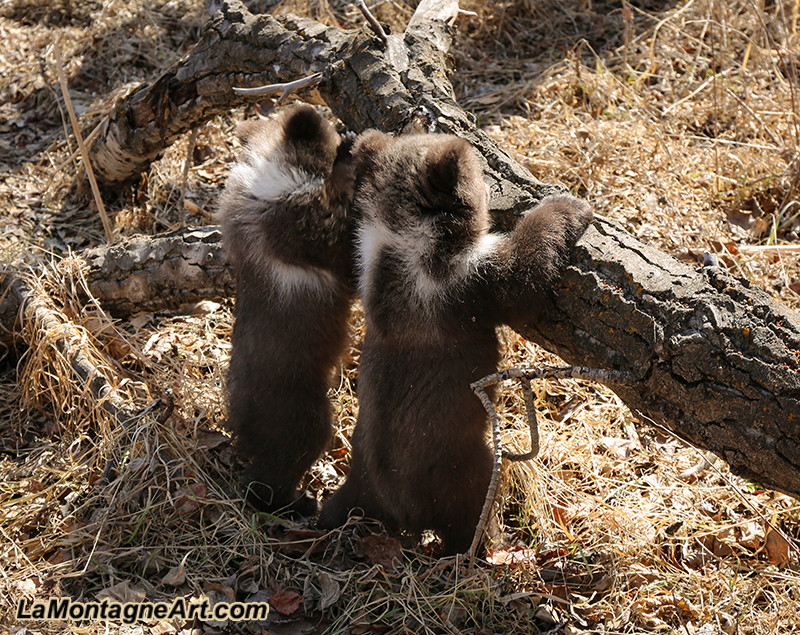 In the hour and a half we were out in the woods with the cubs, I took just under 1500 photos. With bright sunshine and dark shadows, the lighting wasn’t ideal. The bears were often between me and the sun, so I didn’t get as much light on their faces as I would generally like. Hard to complain, though, since I was watching bear cubs play in the woods. I wanted to take some video, but it was too much to handle and would have ruined the experience.
In the hour and a half we were out in the woods with the cubs, I took just under 1500 photos. With bright sunshine and dark shadows, the lighting wasn’t ideal. The bears were often between me and the sun, so I didn’t get as much light on their faces as I would generally like. Hard to complain, though, since I was watching bear cubs play in the woods. I wanted to take some video, but it was too much to handle and would have ruined the experience.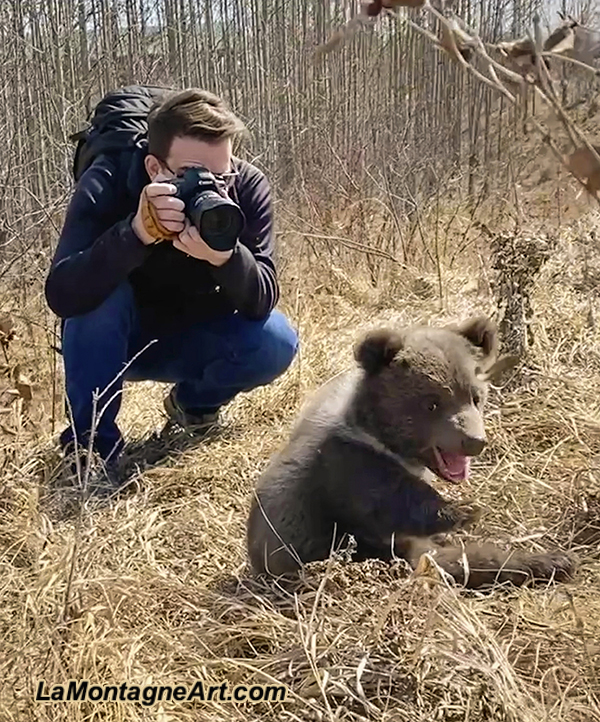
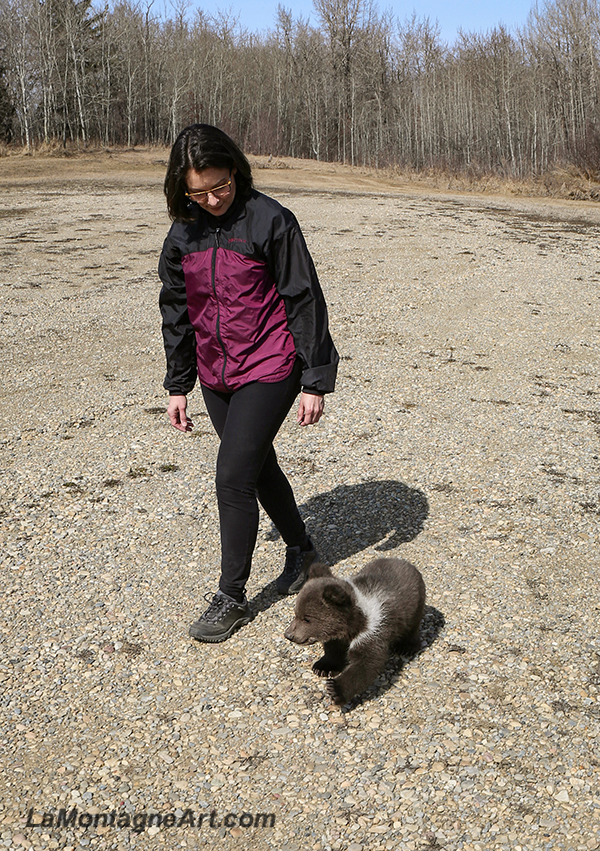
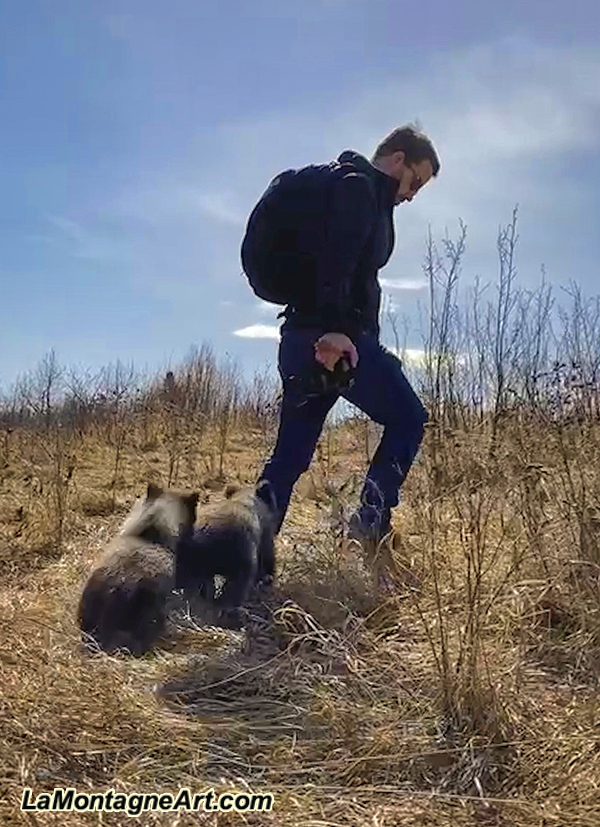 As I don’t like hoarding photos, I’ve already gone through them all and kept just over 100. Most are shots I simply liked, the ones you see here. But I did get about a dozen that I think will be the seeds for future work; there are two paintings in there for sure.
As I don’t like hoarding photos, I’ve already gone through them all and kept just over 100. Most are shots I simply liked, the ones you see here. But I did get about a dozen that I think will be the seeds for future work; there are two paintings in there for sure.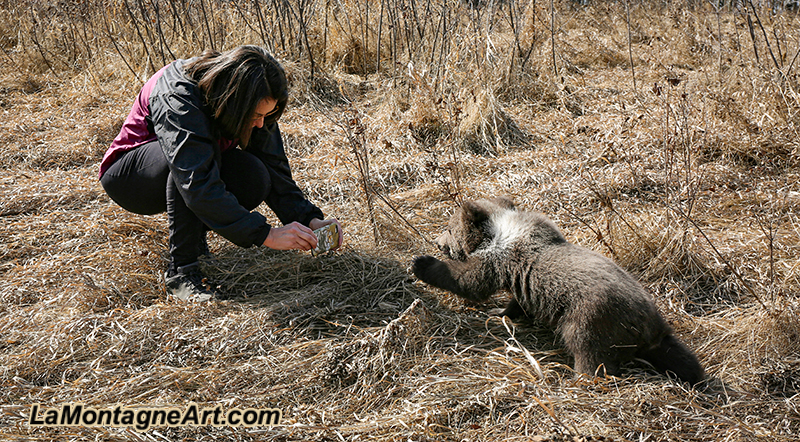
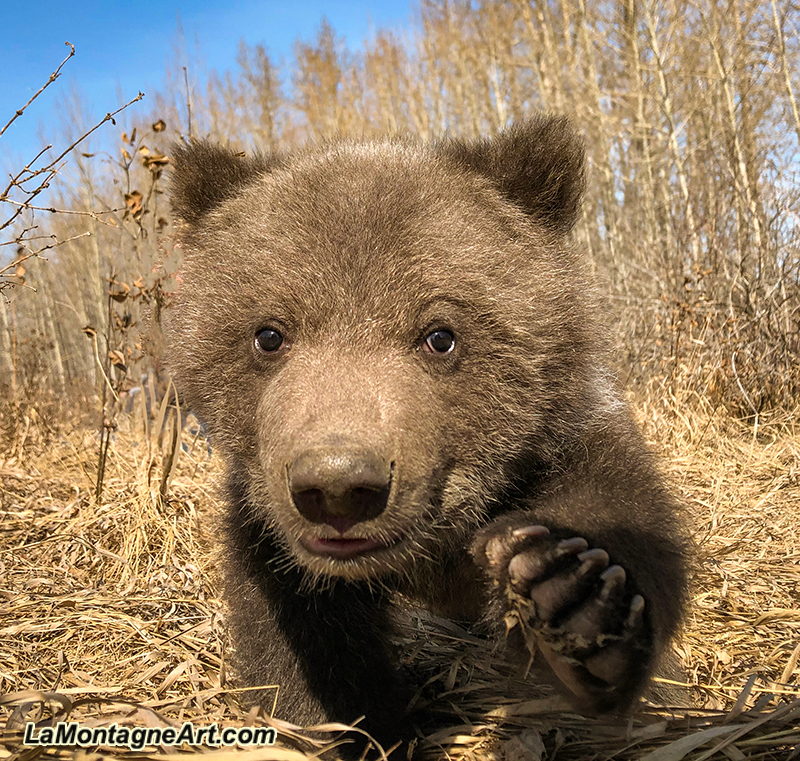 If you’d like to watch the cubs grow up, you can follow
If you’d like to watch the cubs grow up, you can follow 

